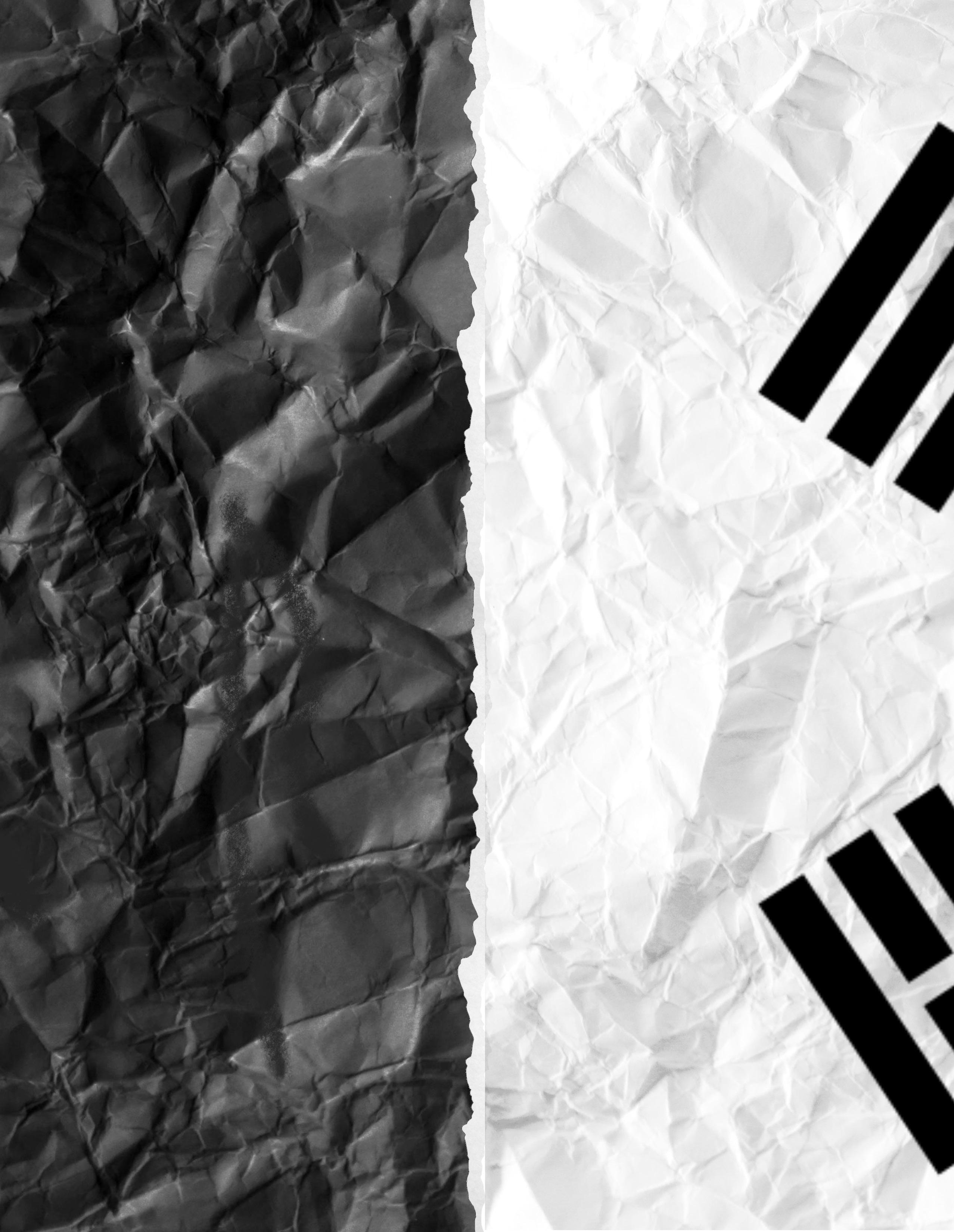




MANAGING BOARD
Editors-in-Chief
Theo Sotoodehnia
Samantha Moon
Print Managing Editors
Alexia Dochnal
Sovy Pham
Online Managing Editors
Phoenix Boggs
Grey Battle
Publisher Owen Haywood
Multi-media Managing Editor
Eliza Daunt
EDITORIAL BOARD
Staff Writers
Logan Day-Richter
Emi Glass
Aubrie Williams
Kiran Yeh
Sheena Bakare
Hanna Klingbeil
Aby Haile
Natalia Armas Perez
Jaeha Jang
Conor Webb
Lucy Drier
Karla Rameriez Gonzales
Associate Editors
Nicole Manning
Vittal Sivakumar
Mira Dubler-Furman
Rory Schoenberger
Nicole Chen
Alex McDonald
Natalie Miller
Sarah Jacobs
John Lewis Gaddis
OPERATIONS BOARD
Technology Director
Dylan Bober
Communications Director
Mira Dubler-Furman
Business Director
Lauren Kim
CREATIVE TEAM
Creative Director
Ainslee Garcia
Design Editors
Carter Cashen
Penelope Day
Alexa Druyanoff
Katie Shin
Ajay Singreddy
Robert A. Lovett Professor of Military and Naval History, Yale University
Ian Shapiro
Henry R. Luce Director of the MacMillan Center for International and Area Studies at Yale
Mike Pearson
Features Editor, Toledo Blade
Gideon Rose
Former Editor-in-Chief of Foreign Affairs
John Stoehr
Editor and Publisher, The Editorial Board
Dear Readers,
Welcome to the 2024-2025 Managing Board’s final print issue! We are so excited to share it with you. This issue has been a joy to edit and features articles spanning the full breadth of the human experience.
There is something for every reader in this issue of The Politic. In our first piece, “A House on Fire,” Lena Cassidy chronicles how Russian oligarchs have responded to the war in Ukraine. In “An American Civic Renaissance,” Conor Webb ponders the future of the Democratic Party, seeking to understand the path to rebuilding from the party’s losses in 2024. Then, in “Georgia’s Last Stand,” Eliza Daunt chronicles the tortured relationship poetry and oppression in Georgia, focusing in particular on the pro-democracy protests that have rocked the country in 2023 and 2024. In our cover story, “A Six-Hour Coup,” Jaeha Jang seeks to understand the societal forces that led Korea to the brink of dictatorship last December. Polarization and misplaced nostalgia, he posits, helped fuel the crisis. This issue ends with two fascinating interviews. In the first interview, Rory Schonberger explores the connection between design, power, and politics with architect Mark Foster Gage. In the second interview, Hanna Klingbeil Canale speaks with Pulitzer Prize-winning photojournalist and filmmaker Javier Manzano, who discusses the important role journalists play in shaping perception and policy.
We hope you enjoy reading our Managing Board’s final issue as much as we enjoyed putting it together. It has been an honor and a privilege to edit this magazine over the last year. We cannot thank our writers, editors, designers, and business team enough—without them, we could not have made it through the last year. We will miss The Politic, but all good things must come to an end, and we are excited to see what our amazing new managing board will accomplish over the next year.
Thank you all. For everything.
With Love, Sam, Theo, Phoenix, Grey, Sovy, Eliza, Owen, and Alexia
The 2024-2025 Politic Managing Board

BY LENA CASSIDY
As Russian forces poured into Ukraine in March 2022, Italian authorities seized the world’s second-largest superyacht in the port of Trieste––a $578 million vessel owned by Russian oligarch Andrey Melnichenko, who built his fortune through ownership of Russia’s largest coal company. The seizure followed economic sanctions by the European Union, including targeting assets of oligarchs with proximity to the Kremlin.
Spencer Woodman, an investigative journalist at the International Consortium of Investigative Journalists, is a prominent voice exposing the corrupt world of Russian oligarchs. Woodman told The Politic he thinks of an oligarch as a “person who acquired their great wealth, usually in the billions… through often-corrupt connections to the highest levels of the Russian state
and the system of patronage, favor-peddling, and influence.”
“Power in Russia is not determined by free and fair elections. It’s determined…by a constituency of ultra-rich industrialists and business people who have a close, symbiotic relationship with the Kremlin. This allows them to get the state’s blessing to engage in lucrative businesses that enrich them. They in turn support the Russian state—specifically the presidency and the political circle of Vladimir Putin,” Woodman said.
The close relationship between Russian elites and the state is long-standing. During the Boris Yeltsin era in the 1990s, oligarchs amassed wealth through government contracts and the rapid privatization of extractive industries in post-Soviet Russia. Jeffrey Sonnenfeld, a Yale School of Management professor who specializes in corporate governance, explained how these oligarchs capitalized on the Soviet Union’s collapse to build their fortunes.
“With the implosion of leadership that preceded Putin, the oligarchs took advantage of the restructuring and perestroika of the Russian economy. People of average means became enormously wealthy through buying undervalued state resources,” Sonnenfeld said.
“That led them to look for somebody who would be a good figure-

“Once the war ends, Russia is going nation because almost all other hollowed

head for them…but [Putin] turned out to be quite conniving—he manipulated them.” In the summer of 2000, Putin held a closeddoor meeting at the Kremlin with 21 of Russia’s oligarchs and offered them a deal: bend to his will and stay out of politics to keep their wealth and privileges, or face exile and imprisonment.
Putin made his first example out of Russia’s then-richest man, Mikhail Khodorkovsky. When armed Russian police stormed his private jet at Novosibirsk airport in October 2003, the oil baron had a net worth of around $15 billion. He made his fortune under Yeltsin by purchasing Siberian oil fields in a rigged auction for only $310 million—a tiny fraction of their $5 billion market value.
Egor Lazarev, a Yale assistant professor who teaches in the Department of Political Science, recounted this infamous episode to The Politic: “There was a criminal case against him. He was arrested and put behind bars for a long time.” Khodorkovsky was stripped of his oil company, and thus his power and fortune.
Khodorkovsky’s arrest was prompted by his brazen criticism of Putin and his accusation of Kremlin corruption. This included his 2001 founding of Open Russia, a pro-democracy movement that sought to strengthen civil society in Russia.
His riches-to-rags story sent a strong message to the oligarchs: cross Putin and you will lose everything. “While some of them still have significant wealth, none of them have significant power anymore…[Putin] is wealthier than all of them,” Sonnenfeld said.
Khodorkovsky is not isolated as a victim of Putin’s tyrannical regime. While he survived imprisonment and is now exiled in London, many others were not so lucky.
Since the 2022 invasion of Ukraine, many prominent Russians have died under suspicious circumstances. “Those who challenge [Putin] have found themselves stumbling into the way of ongoing traffic, or falling out of window sills. It isn’t just one or two random misfortunes––just in the last two years, there have been over 60 of them,” Sonnenfeld said.
Despite Putin curbing oligarchic power in recent decades, many oligarchs still faced sanctions after Russia’s invasion of Ukraine. Phil Kaplan, a professor at the Yale Jackson School of Global Affairs, was involved in developing the U.S. sanctions policy.
In email correspondence with The Politic, Kaplan described how Western sanctions “involved some highly popularized actions like the seizures of pleasure yachts, but also some less glamorous grunt work by sanctions policy analysts to compile exhaustive information on a broad swath of Russian
oligarchs and to list them as Specially Designated Nationals.”
Once the oligarchs are on the Specially Designated Nationals list, their assets and financial transactions are blocked in the U.S. and in most foreign banks. Oligarchs were targeted by sanctions because they are integral in funding the Russian state, Kaplan explained. “When you think about Russian oligarchy, it’s important to understand that these aren’t just rich businessmen operating in the private sector who also happen to be ‘friends’ with Putin. Rather, they are deeply implicated in the Russian state—they support its decisions and they help to fund its initiatives, including the war.”
“Those who challenge [Putin] have found themselves stumbling into the way of ongoing traffic, or falling out of window sills.”
Although Russian sanctions have not forced Putin’s hand, Kaplan argues it is wrong to dismiss them as ineffective. “They definitely ‘work’ insofar as they impose real costs on Russia, make it harder for it to wage its war, and signal to other nations that we remain invested in international norms around territorial conquest.” For example, Russia’s state budget saw its revenues from oil and gas decline 24% in 2023, forcing the Kremlin to hike corporate taxes to offset the losses.
going to face a real risk of total stagsectors in the economy have been hollowed out.”
“It’s the equivalent of somebody and throwing it into their fireplace
“When Putin eventually comes to the negotiating table, one of the primary things he’s going to want is sanctions relief—in particular around energy sanctions. So even if they haven’t yet brought about our ultimate political aims…the sanctions are still exercising a meaningful function in the war.”
The private sector delivered another major financial blow through an unprecedented voluntary corporate exodus. This economic upheaval originated at Yale, where Sonnenfeld’s research team at the Yale Chief Executive Leadership Institute was the driving force in exposing and motivating these companies to exit Russia.
“Doing good was not antithetical to doing well.”

“There’s a team of 50 Yale students that managed to catalyze the historic stampede of over 1,000 firms that exited Russia in protest over its invasion of a peaceful sovereign nation,” Sonnenfeld told The Politic. His team of experts, research fellows, and students maintain a detailed list of companies graded from A to F on their exposure to Russia. After the list went viral, companies hoping to quietly continue operations were thrust into the spotlight of public scrutiny and pressured to leave the Russian market.
The project has gained major attention; the list now has around 100,000 media references and profiles, even though the team “didn’t put out any press releases nor commercialize it in any way,” said Sonnenfeld. “[The list] is freely available on a Yale website, allowing companies, journalists, and activists to track corporate responses. Based on the work of Yale students, we were able to classify the companies as to what magnitude their departure really was.”
Most companies expected their withdrawal to hurt profits, but the opposite happened. “They initially thought it might be at the cost of the well-being of their enterprises in the short term, but it turned out that they were rewarded enormously for pulling out,” Sonnenfeld explained. “Doing good
was not antithetical to doing well. We’ve shown in extensive research that those companies who pulled out benefited from enormous surges in their market value, and those who stayed have suffered.”
Sonnenfeld’s researchers found that the 1,000 departing companies accounted for approximately 40% of Russia’s GDP—a strikingly high proportion. Though departing companies sold their assets to local Russian operators, this rapid corporate exodus has led to long-term structural economic deterioration as Western technical and financial expertise has been lost.
***
The combined impact of sanctions, corporate flight, and cost of war has severely damaged the Russian economy. Russia is facing slowing growth, high inflation, and extremely high interest rates set by the central bank—a recipe for stagflation.
The Bank of Russia has effectively mitigated shocks to the Russian economy through aggressive monetary policy designed to stabilize financial markets and prevent economic collapse. “The main measures Russia took in the immediate aftermath of the invasion were to sharply hike interest rates to quell inflation and to simultaneously implement capital controls to prevent money from leaving the Russian economy,” explained Kaplan.
Steven Tian, a Yale researcher who works closely with Sonnenfeld, described the devastating impact of such high interest rates on loan accessibility and the credit cycle. “We’re looking at a Russian central bank that has a 21% interest rate, but the ripple effects beyond that are massive. We’re seeing high inflation right now in the Russian economy, including food inflation over 20%. Loaning has basically come to a complete stop,” said Tian.
In the past few months, several high-profile oligarchs including Sergei Chemezov, Igor Sechin, and Alexander Shokin have voiced serious concerns that high interest rates could drive companies into bankruptcy. Their criticism appears to have motivated Putin to order the Central Bank of Russia to cancel the expected interest rate hike in December 2024.
Despite Putin’s apparent responsiveness to oligarchs’ concerns over interest rates, Russia’s broader economic trajectory remains bleak. The Kremlin’s efforts to prevent total financial collapse through fiscal stimulus and monetary policy have done little to address the economy’s structural weaknesses.
“Over the course of the war, the Russian economy has also substantially transformed into a ‘war economy’—that is, an economy where almost all of the growth is as a result of military spending,” explained Kaplan. “But that has come with its own issues—namely persistent inflationary pressures, a labor shortage, and brain-drain. Once the war ends, Russia is going to face a real risk of total stagnation because almost all other sectors in the economy have been hollowed out.”
Sonnenfeld agreed with this characterization, arguing that Putin is destroying his own economy to fuel the war in Ukraine. “[The oligarchs’] own businesses are increasingly being expropriated and seized by Putin, who’s turning his economy into a short-term war machine. These businesses are not reinvesting in their own technologies, infrastructure, or products. [Putin] is just running them into the ground. It’s the equivalent of somebody taking the living room furniture and throwing it into their fireplace to keep themselves warm.”
Just last month in January 2025, the Kremlin nationalized Rodnie Polya LLC, a major Russian grain company. “That just goes to show how desperate [Putin] is to cannibalize the entire productive economy,” added Tian.
Although most oligarchs have been sanctioned, they have effective ways to safeguard their wealth. The under-regulated global financial system provides loopholes, allowing oligarchs to obscure the origins of their wealth and access Western markets. Investigative journalist Spencer Woodman has reported on this issue extensively.
“Wealthy Russians, in a lot of cases, rely on complex and opaque systems of offshore finance in order to get their money into the global financial system,” Woodman told The Politic. “It’s hard for them to invest [Russian rubles] in stable investments and enjoy all of the spoils of the life of a global billionaire—the Mediterranean mansions, private jets, and private islands.”
The ultimate goal is to transform money into euros or dollars so it can be integrated into the global financial system. “[Oli-
garchs] do that by establishing shell companies that obscure the ultimate source of the money, and get it into a European Union country like Cyprus,” said Woodman. “Instead of a billionaire approaching a bank in London with a bunch of rubles that they can’t explain, they will have a firm in Cyprus that has financial statements audited by a major Western accounting firm.”
The International Consortium of Investigative Journalists’ Cyprus Confidential investigation revealed how major accounting firms like PwC and Deloitte helped Russian billionaires funnel their money through Cyprus and into shell companies, offshore assets, and Western banks. Woodman explained that the highly complex nature of these financial maneuvers makes them difficult to report on and root out.
“Banks like wealthy customers, and they often have compliance departments that are understaffed and just don’t have time to figure all this stuff out. So if they see a European company with a nice, global accounting firm auditing their financial statements, it’s an easier sell to get that money into the global financial system,” said Woodman.
The future of Russia’s economy and the oligarch class remains uncertain. In 2022, Biden said that the West would deliver a “crushing blow” to the Russian economy through sanctions. While key economic indicators in Russia have deteriorated, Biden’s expectation of a crumbling economy has yet to materialize. Russian elites have also proven adept at shielding their fortunes from Western punishment.
As long as these loopholes remain, oligarchs may continue to fund Putin’s war while living in luxury, even as Russia’s broader economy falters.

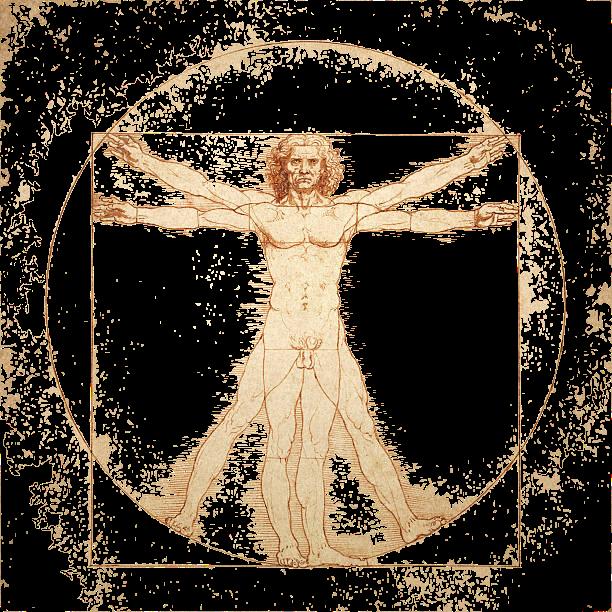
BY CONOR WEBB

When polls closed at 9:00 PM on November 5th, 2024, there was hope in New York City’s suburbs. Former Congressman Mondaire Jones (D-NY17), a progressive reformer, had run to retake the seat he occupied from 2019 to 2021.
The race was a nail-biter. Over 25 million dollars were spent, making it one of the most expensive Congressional races in American history. But Jones came up short of incumbent Congressman Mike Lawler (R-NY) by just 23,946 votes out of nearly 380,000 cast.
“Vindication” is how Jones described election night.
“I was feeling a vindication in my belief that the district had changed from where it was in 2020. Now, of course, the district itself was not the same district in terms of the contours of the geography, but you can recreate how the district would have performed in 2020 quite easily. And what we saw in [the 2024] election is a double-digit shift towards the former president of the United States, now the current president of the United States, Donald Trump.”
This phenomenon, colloquially called the “red shift,” occurred across the country, not only the affluent suburbs Jones aimed to represent. Though the 2024 presidential election was far from a landslide, it was a decisive victory for Trump and the Republican Party. For the first time since 2004, a Republican candidate won the national popular vote, bruising the morale of Democratic organizers across the country.
Yale College Democrats President Christian Thomas ‘26 and his team knocked on doors for Jones in October. Thomas held out hope for Jones—and for Democrats across the country— until the end.
“I held on until the very last minute. I went home. My friends were hosting a watch party, and everyone there was in despair. And I was like, ‘Guys, it’s not over yet. We’ve only counted 20 percent of the votes in Phoenix. Once we get to 100% of the votes in Phoenix, then I can consider us perhaps not winning,’”
Thomas recalled.
The next day, Thomas’ emotions took over.
“There’s a moment that is true for a lot of organizers that is just like, ‘damn. That was a lot of work that so many put in, that I also put into this.’ For an hour, I was like, ‘Was any of that worth it? Were any of those three-hour-long drives to Scranton [to knock on doors for Democratic candidates] worth it?’”
While Democrats like Thomas felt uncertainty when Trump was first elected in 2016, they weren’t hopeless. They mobilized to counter his administration. The Women’s March made national news just a day after his inauguration in 2017 by protesting his policies and rhetoric. It was the largest single-day protest in American history. Between 3.2 and 5.2 million people in the United States participated. Intrepid organizers formed grassroots organizations like Indivisible to combat Trumpism.
It is no longer 2016. The fierce resistance that followed Trump’s first election has faded. In its place, the quiet resignation has settled in. The Democratic coalition now wrestles with a painful political identity crisis.

For an hour, I was like,
‘Was any of that worth it? Were any of those three-hour-long drives to Scranton [to knock on doors for Democratic candidates] worth it?’”
Sam Rosenfeld, Associate Professor of Political Science at Colgate University and recent author of The Hollow Parties: The Many Pasts and Disordered Present of American Party Politics, argues Democrats need to examine the coalitional disconnect between the ideological priorities of the party and those of rank-and-file Democrats.
Since 2016, Rosenfeld said, Democrats have bled support down the income and education ladder. “In 2016, [the erosion] was about white voters outside the South who are non-college-educated, who Democrats used to do decently with. And then they lost ground.”
Today, however, Democrats lose ground on non-college-educated voters across age, racial, and ethnic categories.
“That’s a huge problem. That’s a huge problem in terms of who’s in the electorate. And it’s a particular problem for Democrats existentially, in terms of a party that is committed to a vision of economic policy and political economy that is egalitarian and redistributive,” Rosenfeld noted.
This collapse is nothing short of catastrophic for Democrats electorally. In 2012, former President Barack Obama won voters making between $30,000 and $49,999 with 57 percent of the vote. In 2024, Trump won that income bracket 53 to 45. If Democrats are losing the very voters their policies are designed to help, it will become increasingly difficult for them to build winning coalitions.
But it’s not irreversible. Rosenfeld sees a chance to rebuild the Democratic Party and ignite a new generation of bold, unwavering advocates. Rosenfeld argued, “you have to think creatively about trying to rebuild a kind of civic and social and organizational life out there.”
“That could include and encompass ordinary working people in spaces that would habituate them to think it’s normal to vote for Democrats like there used to be,” said Rosenfeld. Several key stakeholders in the Democratic Party—academics, national political leaders like Mondaire Jones, analysts, and organizers—agree with Rosenfeld.
They have a vision for a Democratic Party that can rekindle its once-collective purpose and rise boldly against Trumpera disillusionment, a plan involving relational
organizing, institutional reform, and truthfulness. The stakes couldn’t be higher.
Relational organizing might be the future of the Democratic Party.
On Saturday, November 2nd, just three days before Election Day, former Vice President Kamala Harris’ presidential campaign knocked on over 1.2 million doors in Pennsylvania, Wisconsin, and Michigan. The sheer organizing power of the Harris-Walz campaign gave the appearance of unstoppable momentum.
Yet Rosenfeld was skeptical. “I and others have had [suspicions] about parachuting in armies of idealistic, absolutely admirable volunteer canvassers from out of state to go around knocking on doors a million times.”
Rosenfeld called it a “costly way of trying to eke out votes.”
“It may not be effective at all. The scholarship has always said that leveraging people who are in those communities themselves, who are your neighbors or your friends or people you know, has just way more bang for your buck than professionals,” said Rosenfeld. This strategy is known as relational organizing, the practice of building political trust through entrenched personal relationships over long periods of time. Instead of dedicating large sums of campaign cash to temporary brigades of volunteers to battleground states, relational organizing aims to maintain those relationships over time.
Jack Dozier ‘27 is from rural Virginia and researches youth voter priorities with the Yale Youth Poll. Dozier spent three months as a regional organizer with the Virginia Coordinated Campaign—a joint effort spearheaded by the DNC, the Harris-Walz campaign, and the Virginia Democratic Party—and has seen firsthand the impact of relational organizing in his battleground home state. “Relational organizing is such an incredible program. It still has a way to go, but it’s reintroducing the idea of having conversations,” he said.
“When you’re an undecided young voter and you talk about the election with a trusted family member, with a close friend, with a family friend, that’ll have more of an impact on your decision-making than what some celebrity posts on Twitter,” Dozier noted.
Dozier named apps like Reach, a progressive organizing
“I and others have had [suspicions] about parachuting in armies of idealistic, absolutely admirable volunteer canvassers from out of state to go around knocking on doors a million times.”
app piloted by Representative Alexandria Ocasio-Cortez (D-NY) and her insurgent Congressional primary challenge in 2018, which helps campaigns and activists engage voters and supporters in real time through relational and grassroots organizing.
Relational organizing strategies, including bolstered campaign infrastructure and offices open to staff and (importantly) the broader public, tend to become more effective with sustained, yearround implementation. Dozier said that while year-round infrastructure is difficult, he found it more difficult to logistically set up new campaigns every other year. “As someone who helped open the office that I worked in, I spent more days in my first month of employment buying office supplies than actually talking with community members. Oh, my God, it was so hard to buy a stapler.”
Dozier added that when campaigns end, “the office lease goes up, the locks get changed, and all the furniture goes wherever it ends up.” Had the resources been present already, Dozier could have established more entrenched relationships with the community where he worked. Dozier covered nearly 1,500 square miles of territory, so the extra time spent building relationships with voters would have made an extraordinary impact. It’s for this reason that he calls relational organizing “the future of our modern politics.”
“As an organizer, I [have noticed] fewer people opening the doors and responding to text-bank texts. There’s a lot to be said about that. The methods that have won [young people] for years and years aren’t working as well anymore. There’s a route to find more trust, and that comes locally [in relational organizing].”
This recent decline in engagement is partly due to oversaturation—voters are inundated with campaign messages across platforms— and a generational shift in communication habits. Young people are also less likely to answer calls or respond to texts from unknown numbers than previous generations.
Relational organizing, applied to the conventional methods of voter outreach, offers a trusted, local alternative to cut through the noise. It is about elevating endorsements that carry weight within communities where trust and familiarity matter most. Dozier argued that small-scale endorsements, rather than the celebrity endorsements extolled by the Harris-Walz campaign, are intertwined with the project of relational organizing.
Dozier said, “celebrity endorsements are going to reach who they’re going to reach, but they might not have as much of a sway as we’ve thought they did. If your local paper, if your member of the Board of Supervisors, if your school board member is endorsing these national candidates, I think there’s a lot more trust.”
This stands in stark contrast to the Harris campaign’s strategy in 2024.
“One of the first celebrity endorsements of Harris was Charli XCX. A young person might say, ‘oh my gosh, that’s so exciting, Charli did this song [like the popular album “Brat” on which Harris branded her campaign].’ But there’s not complete trust of any given celebrity. It’s time to move even further into relational organizing, because that’s where you can make a real, tangible, and seeable difference,” Dozier remarked.
To repair the Democratic Party, the broader American political landscape may need reform.
Mondaire Jones shares Sam Rosenfeld’s observation about the disconnect between the ideology of the Democratic Party and the voters it purports to represent, but he takes the quandary one step further.
“It is untenable that a majority of working class people would not be voting for Democratic candidates as we seek to carry the mantle of the working class economic agenda,” said Jones. His solution: the party “needs to lean into an economic populism in order for us to regain the trust of the American people, particularly working class people we say we are running to represent,” requiring institutional changes that go beyond an increased emphasis on relational organizing.
This economic populism might take shape by the party chang-


ing the way it markets the pro-labor policies most Democrats already endorse. Democrats were criticized in the wake of Harris’ loss for overusing technocratic policy rhetoric. Shifting toward language that resonates with working class voters might align the policy—bolstering unions, raising the minimum wage, and cracking down on corporate monopolies that stifle competition and drive up the cost of living—with the politics to garner votes.
Jones felt this misalignment in Harris’ campaign. “I would have been at a loss for knowing what [Harris’] economic platform was, beyond the very good idea of expanding Medicare to include long-term care and the economic assistance for first-time homeowners.” Economic populism would have shaped a political vision that better connected with those who feel left behind by traditional party politics, particularly the working-class voters who are increasingly turning away from the Democratic Party. It demands that the economic struggles of working Americans take center stage in shaping the Democratic agenda. Jones’ desire to change the messaging and usher in economic populism is one step to regain the trust of the American people. It also may require overhauling the country’s institutional structure to reshape the civic and political order.
Some experts envision strengthening spaces, like unions, community groups, and local civic organizations, where working people naturally engage with Democratic politics in their daily lives. These spaces have historical precedent. Rosenfeld argued that labor unions once contributed to a civic order that lent strength to Democratic candidates who attempted to represent the issues of the working class. At their height, labor unions were powerful engines of civic participation that mobilized millions of workers to channel their collective power into tangible political influence.
“Labor unions were the most clear example of [civic spaces] but kind of ramified all out across American civic life. And now, we are in a moment where Trump is a really important actor in making [their erosion] happen, where if you are a normal, non-highly educated, not particularly political person, you’re just more likely to vote Republican, and that wasn’t always the case,” Rosenfeld said.
In 2024, labor union membership slipped to 9.9 percent, a historic low. This decline can be attributed to a combination of factors, including the rapid spread of “right to work” laws that restrict union participation, globalization allowing companies to relocate jobs abroad, the rise of automation, and deregulation that has weakened workers’ protections.
Christian Thomas wants to develop this infrastructure for the Yale College Democrats. Citizens who identify as Democrats deserve “spaces for the [wide ideological] spectrum of the Democratic Party to coexist.”
“The biggest thing coming into this position that I have [done] is just offering a wide spectrum of opportunity for individuals to explore and act on different issues [that extends beyond just election season],” said Thomas.
Thomas ensures his group meets weekly. “We have conversations about what’s going on around the nation, bring in speakers who are experiencing firsthand the ramifications of a lot of the misinformation that we’ve seen [from the Trump Administration], and encouraging our members to present their own interests.”
It might take more than invigorating American civic organizations. Escaping dark money’s domination of American politics and completely reforming democracy might be the antidote to Democratic troubles, and ostensibly the nation’s anxieties.
In 2024, anonymous sources directed over $1 billion to independent political committees supporting both Democratic and Republican candidates. According to the Brennan Center for Justice, the largest outside group supporting Harris’ campaign was a dark-money funded super PAC. Elon Musk gave at least $277 million to two super PACS that supported Trump. If candidates rely on money from secretive wealthy donors, they are incentivized to support donors over their own constituents.
“As someone who helped open the office that I worked in, I spent more days in my first month of employment buying office supplies than actually talking with community members. Oh, my God, it was so hard to buy a stapler.”


We have to remind people who takes care of them economically, and it isn’t the Republican Party.”


“the prescription doesn’t say you abandon the causes of civil rights and liberties from marginalized groups. What it’s saying is: you let that speak for itself. Our diversity speaks for itself.”




Kyeonghee Eo, an assistant professor of East Asian Languages and Literatures at Yale University, checked X on the morning of December 3rd, 2024. It was a week before her long-awaited trip to visit family in South Korea. What she saw when she logged on made her feel a “time jump into the past.” In a televised address at 10:27 p.m. Korea Standard Time, President Yoon Suk Yeol had declared emergency martial law throughout Korea.
Yoon, the prosecutor-turned-president, is a key figure in the conservative People’s Power Party. In his December 3rd declaration, he accused leftist opposition parties, which hold 192 out of 300 seats at the National Assembly, of conducting “anti-state activities” and collaborating with North Korean Communists to sabotage the nation. Yoon’s martial law order prohibited all political activities and censored national media publications. In an attempt to arrest party leaders and prevent lawmakers from entering the Assembly, soldiers were deployed across Yeouido, the island that houses the legislative body.
It was an extreme demonstration of the polarization that has characterized Korean politics since 2017, when President Moon Jae-in won a snap election following the impeachment of President Park Geun-hye. Yoon partly owes his presidency to this rise in polarization. In Korean politics, the ability to confront the opposition has perhaps become more important than political qualifications in choosing presidential candidates.
“Yoon, despite having no prior political experience, emerged as the conservative candidate after resigning as prosecutor-general following a confrontation with Moon,” a February memo by the Council on Foreign Relations reads. “His adversarial stance against Moon was viewed by the People Power Party as a strategic asset, positioning him as a champion for conservative supporters seeking retribution against the incumbent administration.”
For many Koreans, including Eo, Yoon’s declaration of martial law evoked traumatic memories. Korea has a tumultuous relationship with martial law, which had been declared 16 times in the country before 2024. The most recent declaration had lasted from 1979 to 1981.
Some of these declarations were responses to legitimate crises––rebellions, presidential assassinations, and the Korean War. However, according to Dongwon Lee, an assistant professor of history at Seoul National University, at least two instances of previous martial law declarations were self-coups. A selfcoup is an illegitimate use of force by someone already in power to keep and strengthen their position.
The first self-coup, declared by President Park Chung-hee in 1972, dissolved the Assembly and amended the Constitution to eliminate Park’s term limit. The second was in 1980, when then-general Chun Doo-hwan extended an ongoing martial law in certain provinces to the whole nation in order to empower his military regime and suppress dissent. In October 1979, President Choi Kyu-hah declared martial law after Park’s assassination, but Chun seized power in December and used an expansion of martial law in May to keep power.
While Yoon’s declaration of martial law was also an attempt to preserve power, it was distinct from previous
coups in two ways.
First, Korea was not embroiled in a significant social or economic crisis––a typical justification for previous declarations of martial law. According to Junhan Lee, a political science professor at Incheon National University in Incheon, Korea, past military coup leaders emerged into Korean civil politics to manage “social chaos” through force. In contrast, there was no active internal military support for the December 2024 martial law declaration.
Junhan Lee argued that only Yoon perceived a sense of crisis as polarization deepened and the opposition wielded its legislative power against him. Since Yoon’s five-year term began in 2022, the opposition-led Assembly impeached 10 ministers and consistently tried to appoint a special prosecutor to zero in on his wife’s scandals, which Yoon vetoed every time.
“The country had no problem––only Yongsan was the problem,” said Junhan Lee, referring to the Seoul district in which the presidential office is located. “The people thought the president was the crisis.”
The nature of the Korean military has also changed since the end of the last martial law, making the enforcement of martial law more difficult in 2024 than in 1981. The martial law rollout in December, then, was complicated by several obstacles. One factor was technology: Dongwon Lee said the presence of smartphones in the military, allowing contact with the outside world, made it impossible to keep secrets and “control” the soldiers.
“For the military to stage a coup, the most important thing is to keep it a secret,” Junhan Lee said. “But the fact that soldiers have phones makes it hard to keep secrets. If anyone posts a picture or tells their mom they’re being deployed for martial law, a successful coup is impossible.”
The fate of the last military regime also left an imprint on the military’s psyche. The drastic action taken against the regime’s leaders created a sense of fear among would-be dissidents. Chun and his successor Roh Tae-woo, who led the coup following Park’s death, were put on trial and sentenced to prison in 1997, a warning against anyone in the military who would plan a coup. Subsequent presidents also made sure to destroy secret military societies, the most notorious of which was Hanahoe, a private group headed by Chun.
According to Je Yeon Oh, a history professor at Sung Kyun Kwan University in Seoul, Korea, martial law has also become more challenging to execute, given Korea’s 21st-century reputation for democracy and globalization. It would have been antithetical to Korea’s image for soldiers to use force against citizens––especially on live TV.
According to Dongwon Lee, these factors have made a successful self-coup in contemporary South Korea effectively impossible, and accordingly, Yoon’s attempt unraveled in less than six hours.
After Yoon’s dramatic deployment of troops across Yeouido, lawmakers jumped over fences and slipped through soldiers to cast their votes to overturn martial law, a process that is binding with a majority vote. Meanwhile, citizens flooded the streets in protest. At 1:02 a.m. KST, the overturning motion passed in a 1900 vote, and at 4:30 a.m., Yoon and his cabinet formally lifted the decree. Yoon, impeached by the Assembly on December 14th, still awaits the Constitutional Court’s
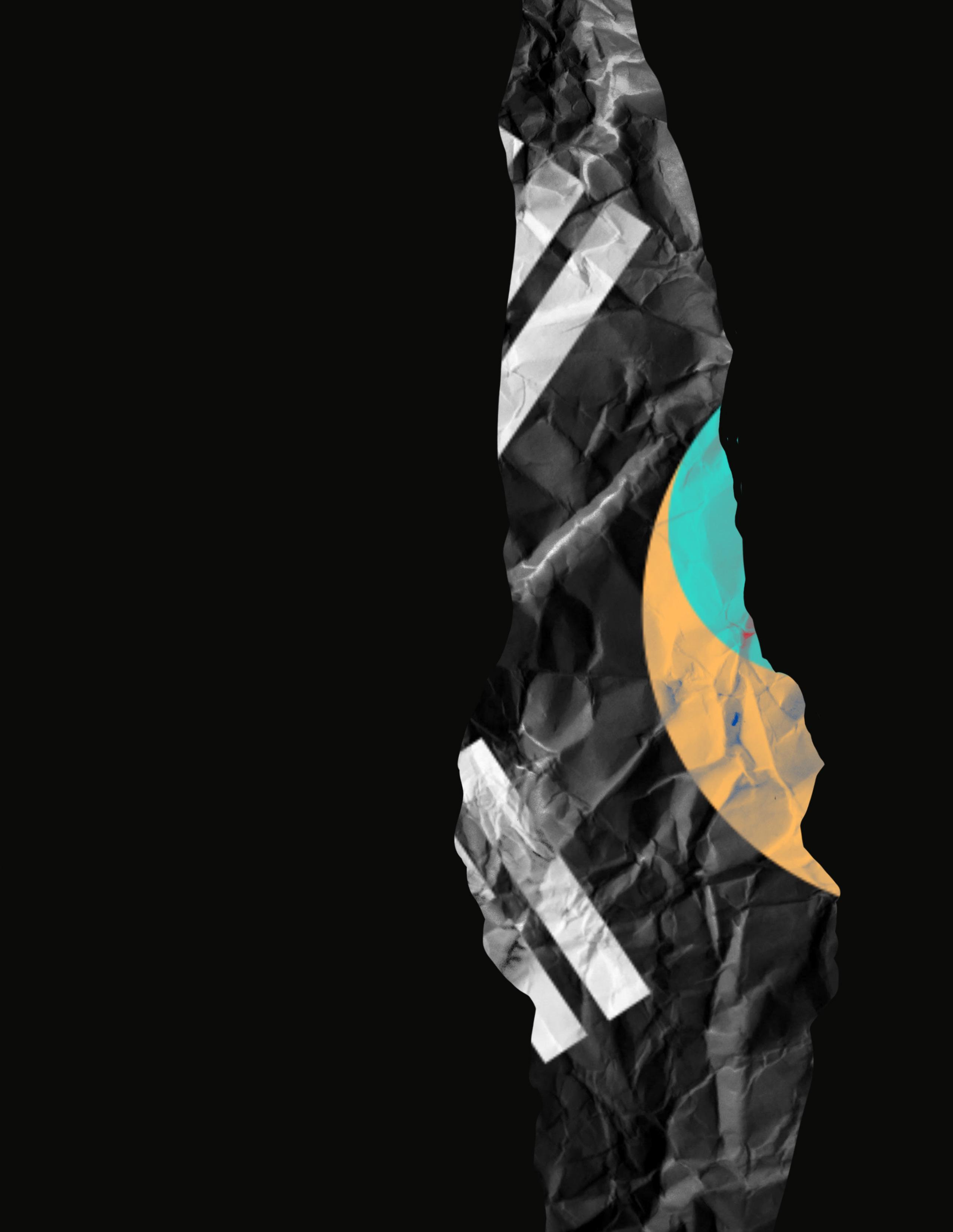
decision on whether to remove him from office.
Eo remembers feeling struck by the reaction of the people, who embodied a rare moment of national unity following the widespread rise of polarization in recent years.
“In the midst of all of it, there was a moment of unity across political factions and different belongings, where people were really trying to find a way to fight it together,” she said. “I do think having that history––the traumatic memory––does make people hardened to know what could follow and to do everything to prevent it.”
Dongwon Lee said the question now is how Yoon could have held such an “anachronistic” belief that his self-coup could succeed. A possible explanation lies in Yoon’s background as a prosecutor.
In Korea, prosecutors hold immense power. According to Dongwon Lee, since prosecutors have the power to both investigate and prosecute individuals, their ability to investigate someone without prosecuting them has historically enabled abuses of power. Furthermore, as the prosecutor-general from 2019 to 2021, Yoon had authority over all prosecutors in Korea, and he may have assumed an ascension to the presidency would grant him a comparable or greater level of control.
Yoon even won the 2022 presidential election by framing the race between him and his competitor, the opposition leader Lee Jae-Myung, who has been accused of breaking election laws, as a battle between a prosecutor and a criminal.
“I think he thought once he becomes president, all authorities in Korea, including the Assembly, would follow his orders,” Dongwon Lee said. “But the choice of the Korean people was to keep him in check with a big opposition majority. A president well-versed in politics would have bowed to the opposition and struck deals. That’s the point of the separation of powers. But he’s not someone like that.”
Instead, Junhan Lee said, the prosecutor in Yoon saw the deadlock between him and the
Assembly as a battle between good and evil. For Yoon, the polarization between his party and the left was a fight between right and wrong––between lawful and unlawful.
He was used to wielding his prosecutorial power to punish his enemies, and with the strong, albeit narrow, right to martial law endowed to him as president, he made an “ignorant” attempt at a selfcoup.
According to Hans Schattle, a political science professor at Yonsei University in Seoul, Korea, this prosecutorial character is also driving Yoon to contest his impeachment.
“Yoon spent his career fighting court battles as a prosecutor, and now he’s making it clear he’s ready and eager to fight in his own defense,” Schattle said. “Given Yoon’s background and his temperament as president over the past three years, it isn’t surprising.”
Unlike past presidents who faced impeachment trials at the Constitutional Court, Yoon has personally appeared in court to justify his martial law decree, maintaining that the declaration of martial law, as a unique power given to the president, is not subject to judicial review.
His party, the People’s Power Party, is backing this defense in an effort to salvage future elections, with many supporters also endorsing false claims of election fraud about the opposition Democratic Party’s congressional victory last April. Although Yoon’s approval rating fell to 11% following his declaration of martial law and its subsequent reversal, it has rebounded to above 40%.
Supporters of the People’s Power Party, most of whom initially rejected Yoon’s declaration of martial law, are increasingly endorsing the decree as a means to combat the left.
Kihoon Lee, a professor of modern Korean history at Yonsei University, said that this recovery, at least among the elderly population, may stem from anxiety resulting from the nation’s failure to meet values like social equality and elderly care post-democratization.
Feeling left behind in the wake of a democratized and wealthy
A president well-versed in politics would have bowed to the opposition and struck deals. That’s the point of the separation of powers. But he’s not someone like that.
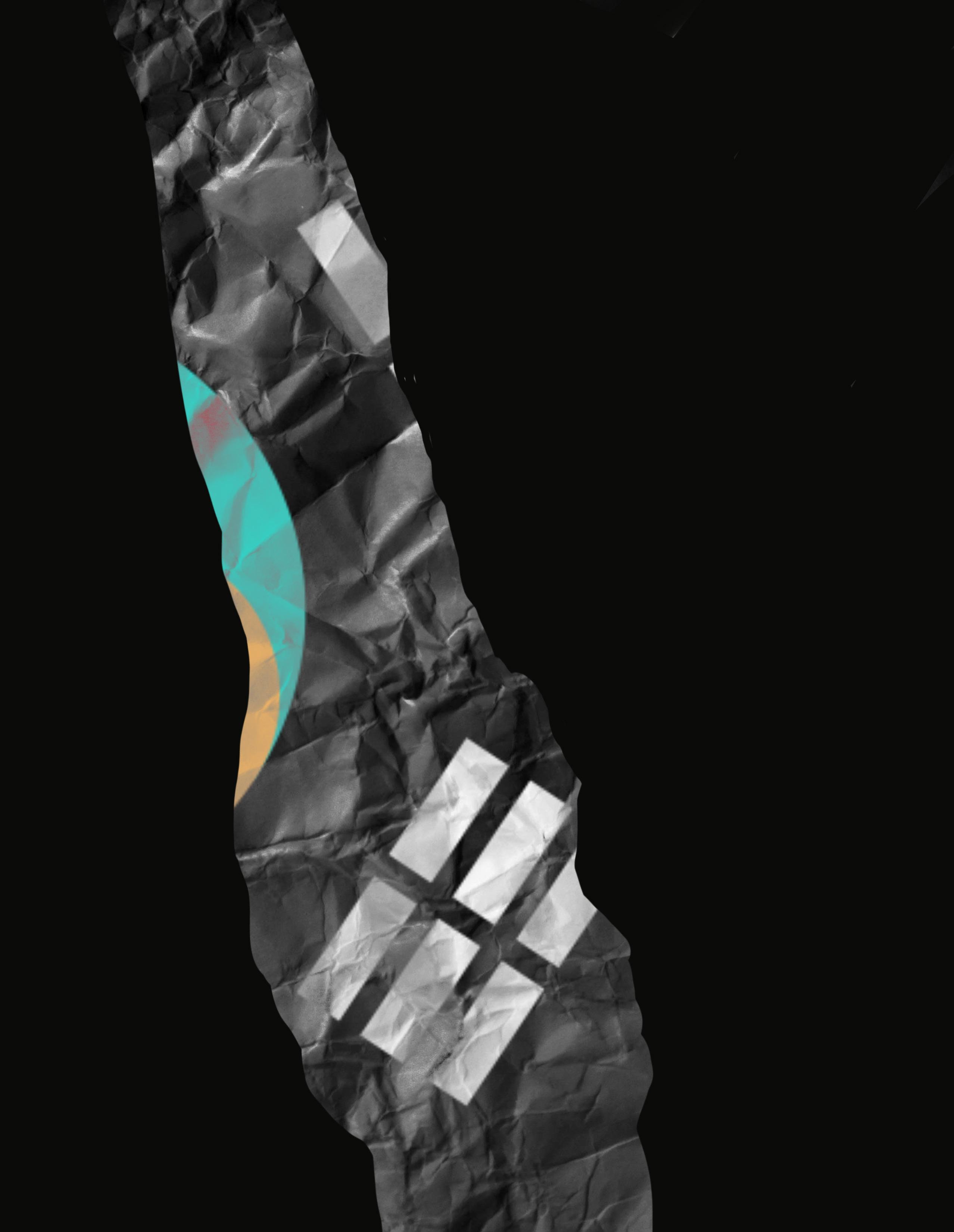
Certain generations feel nostalgic for a Korean society that they perceive as having been stable under dictatorships.
nation, they turned to the right.
“Certain generations feel nostalgic for a Korean society that they perceive as having been stable under dictatorships,” said Hwansoo Kim, a professor of Korean Buddhism and culture in the Department of Religious Studies at Yale University.
Kim added that the support for Yoon’s authoritarianism may have its roots in a backlash against “globalized capitalism.”
“In the current economic stalemate, chaotic social tensions and debates surrounding immigration, gender, and many other issues might give an impression of how chaotic society is,” he said. ”I think the older generation may look back at a time when it was less chaotic… It’s not a sudden instant orchestrated by this single individual. I think Korean society has reached a point where there is some anti-globalization sentiment going on.”
Kim also predicted that younger generations will turn towards reactionary authoritarianism, too, as they question why they have to compete for opportunities so vigorously with foreigners and even with North Korean defectors. According to Kim, this trend has already taken effect across Europe, where far-right parties appealing to antiimmigration and economic concerns have gained popularity among young voters in
countries like Germany, France, and Italy.
Dongwon Lee agreed that the trend toward authoritarianism isn’t limited to Korea. Amid a global economic crisis, “hate-based” politics centered on national interests have become dominant across the world. This trend was evident when Yoon, in an attempt to justify his decree, claimed in a televised address that Chinese spies and solar panels were destroying Korea. It was an attempt to link the Democratic Party with Communism, a longstanding strategy of fear employed by the Korean right.
“For those on the right, the fear of Communism remains deeply engrained in their psyche,” Kim said.
According to Eo, a backlash against progressivism may also be driving support for Yoon.
“There were people on the streets who were feminists, who were queer, who were advocating for labor rights,” she said. “And all of them had more of a platform to speak about their agenda… I think it’s definitely a reaction against that, where they decide, ‘If I have to pick between Yoon and a queer feminist, then maybe I’ll just side with Yoon––just to shut these people up.”
Although this backlash is a strong force, it would be inaccurate to say that there is no sustained grassroots resistance against Yoon’s authoritarian shift. While progressive, minoritydriven groups are off-putting to some people, they are energizing to others.
In spite of Yoon’s martial law declaration and the ensuing political turmoil, Eo returned to Korea as planned in December 2024. She was protesting on the streets of Yeouido on December 14th when the Assembly ultimately passed the vote to impeach Yoon. She remembers celebrating with hundreds of thousands of people––some of them middle-aged labor union members who rented a bus from Busan, some flying rainbow flags. It was a stark contrast to the defeatism that was prevalent among progressive circles at the beginning of Yoon’s term.
“It just took this kind of really drastic step, and everybody was suddenly out there on the streets, and it was just such a nice feeling to confirm that everyone was still alive, like they were somewhere out there just hiding and waiting for their moment,” Eo said. “When things get discouraging here, I try to remind myself of how I felt on the 14th of December. Maybe we’re not out on the streets all the time, but we’re still out there somewhere and just waiting for the storm to pass.”

BY ELIZA DAUNT
On July 22, 1937, at the height of Stalin’s Great Purge, the poet Paolo Iashvili walked into the Writer’s House in Tbilisi, now a sanctuary for Georgia’s literary elite, then a courtroom of fear. The authorities had declared writers must either subordinate their art to the revolutionary mission or face “the language of the bullet”.
Desperate to prove his loyalty, Iashvili renounced his works and reiterated his devotion to Stalin. It was not enough. When given an ultimatum to betray his lifelong friend and poet, Titsian Tabidze, or endure NKVD torture, he walked into the adjacent room and shot himself dead with a hunting rifle.
Hans Gutbrod, Associate Professor at Ilia University in Tbilisi, told The Politic, “Before he committed suicide, Iashvili wrote a letter to his daughter, ‘Always tell the truth,’ he advised.” Nearly a century later, Georgia’s writers are once again under attack and this advice feels more relevant than ever and just as dangerous.
“Dictatorships are shaped and formed by words, making writers the first targets. We have a big tradition of resisting dictatorship. We are always part of the resistance, without any exception,” Paata Shamugia, a two-time Georgian National Literature Prize winner, tells The Politic “Under the Soviet Union, poets and writers who resisted were exiled to Siberia or just shot in the head. For writers, it’s even more sensitive because of that historical memory.”
That memory is no longer just history. Political fracture divides the country between competing destinies that place the country under Russia’s effective tutelage, or a future of independence within the European Union (EU).


For months now, Georgia has been gripped by political upheaval. The streets of the capital, Tbilisi, have remained dense with protestors. Huddled together and enduring freezing temperatures they chant, “Freedom to all the prisoners of the regime.” Activist and artist, Anamaria Burduli told The Politic, “These protests have seen the largest amount and variety of people ever to have gathered in Georgian streets. After the first wave of youth protests were severely dispersed, people of all ages turned up to fight.”
They demand a rerun of the controversial parliamentary election and voice their support for EU accession. Burduli summarizes the good and bad outcomes, “We have a long way to go and the Oligarchy won’t dissolve overnight. Getting rid of this dictatorship to hold elections that could be considered somewhat democratic would be the bare minimum. If we can’t at least get a change of government after 12+ years that would definitely be a bad outcome.”
In December, the protests were characterized by violent clashes. Human Rights Watch condemned the brutal police violence against largely peaceful demonstrators. UK Foreign Secretary David Lammy declared that “the shocking violence inflicted upon protestors, opposition leaders, and journalists was an egregious attack on democracy.”
Shamugia summarizes that “Many people, about 500, have already been arrested. 52 people are still in prison right now. They did not commit anything, except exercising their right to express their world view. The only “evidence” consists of false witnesses who, in 100% of cases, are police officers. There are no recordings. Police officers claim in court that, for some reason, their body cameras were malfunctioning when they arrested the ‘criminals.’”
Burduli adds “I’ve seen and heard about harrowing acts of torture and violence towards my friends and fellow protestors including girls and children who were arrested or beaten by gangs of armed police. The government channels are faking data, hiding footage of police brutality, and claiming only radicals are opposing them.”
How did Georgia end up here? In one word: Ivanishvili
Bidzina Ivanishvili, born in an impoverished Georgian village then on the fringes of the Soviet Union, is now by far
the country’s richest man. His fortune is estimated to be $7.5 billion, a quarter of Georgia’s GDP. (An equivalent dominance in the US would require a fortune of $7.5 trillion.)
After finding success in Moscow selling computers in the 1980s, he moved into banking and metals, acquiring Soviet-era state assets. In short, he is the quintessential post-Soviet oligarch.
He returned to Georgia in 2003, buying a $50 million compound on a hill that towers above Tbilisi, complete with a private zoo, collection of Picassos, and pet sharks. Gripped by paranoia after his brother’s 1990s kidnapping, he lived in secrecy, on his rare movements around the country doing so in disguise and earning himself the title, “the loneliest man in Georgia.”
In 2012, he unexpectedly burst from the shadows to launch the Georgian Dream Party, served as Prime Minister for a year, and now holds the title of honorary chairman. He remains the party’s de-facto leader, often regarded as the country’s “puppet master.” Shamugia concludes, “This is a one-man show. Ivanishvili controls everything, and we don’t trust anyone he appoints.”
Following the Russian invasion of Ukraine, the Georgian Dream Party adopted a sharply anti-Western stance.
The Escalation of Conflict
2024 marked a turning point for the Georgian Dream party. In April, Prime Minister Irakli Kobakhidze––firmly under Ivanishvili’s control––pushed through the controversial Transparency of Foreign Influence Law, triggering mass protests.
Dubbed the “Russian law,” the legislation mirrors Moscow’s 2012 crackdown on civil society, requiring NGOs with over 20% foreign funding to register as foreign agents. With nebulous language and draconian penalties, critics view it as a tool to suppress dissent ahead of Georgia’s elections and hinder negotiations to join the EU.
The international backlash was swift, with the U.S. reviewing ties, citing “democratic backsliding,” and imposing sanctions. The UK, EU, UN, and NATO followed suit, further isolating Georgia.
“This isn’t the way society should function,” said Gutbrod, warning the law is stifling media, especially opposition outlets, and straining non-profits.
The playbook
As Georgia’s 2024 parliamentary elections approached, Ivanishvili escalated
his anti-LGBTQ+ rhetoric. “LGBT propaganda is a super-modern weapon of conquest,” he declared, rallying against the “horrors of gay parades” in the West.
On October 3, words became law––the Georgian Dream-dominated parliament passed the Law on Family Values and Protection of Minors, mirroring Russia’s anti-LGBTQ+ policies. The bill bans samesex marriage, adoption by same-sex couples, and public LGBTQ+ representation in media, energizing social conservatives, particularly in rural areas.
For Tbilisi’s creative community, the crackdown has been devastating. “Tbilisi’s art scene, which was gaining international traction, has been capsized. It has caused many young artists to flee,” said singer Burduli.
Burduli also points to rising media repression, “The government has taken over TV channels like Imedi and Rustavi 2 to racialize homophobic traditionalists.” She added, “My grandfather now believes that moving toward the EU and choosing parties [other than the Georgian Dream] will lead to a Russian invasion or force children to become drug-addicted, tradition-hating, gay Satanists, and make same-sex marriage mandatory. The propaganda has terrified him.”
In November, the Georgian Dream turned against one of the country’s deepest aspirations––EU membership. Despite 83% public support and its enshrinement in the constitution, the government abruptly halted the accession process until 2028, a move welcomed by Putin and his allies.
Shamugia describes the public outrage. The Georgian Dream’s slogan was “peacefully to Europe,” a will reflected in the constitution, only to abandon this ethos after winning. “They betrayed their own voters,” he says. “That’s why we call it a constitutional coup. It feels like someone is trying to betray our biggest dreams.”
Anna Gvarishvili, investigative journalist, and head of the Investigative Media Lab, told The Politic, “Europe was always part of Georgian identity–it’s existential for us. Our goal isn’t just EU membership, but a nation built on liberal democratic principles. It is about our identity, culture, and political nature.”
Protests erupted nationwide, with Transparency International reporting 460 detentions and over 300 cases of ill-treatment or torture. The EU and US both condemned the government for democratic backslid

“There is a commentary of people who side with this authoritarian assault because they compress the local story into their dichotomous view of the world. The world’s a lot more complicated than that.”
ing, while even the Kremlin ominously drew parallels to Ukraine’s Maidan.
With frustration, Gutbrod condemns those on the left who, while critical of Western failures, misinterpret Georgia’s pro-EU protests as blind allegiance to it. “There is a commentary of people who side with this authoritarian assault because they compress the local story into their dichotomous view of the world. The world’s a lot more complicated than that.”
For most Georgians, the choice is not about unconditional support for the West––it is about rejecting the Russian threat and safeguarding against authoritarianism. “Georgians see the EU through a longer lens,” says Gutbrod. “While many Europeans focus on its flaws, Georgians recognize it as a safeguard for sovereignty and a resistance against authoritarianism and regressive, often male-dominated, forces.”
Shamugia affirms, “We do not see the European Union as a divine entity that will solve all our problems. We simply know that we want a normal life. And when faced with the choice between a
Russian anti-democratic system or the European Union, there is little to debate.”
On October 26, 2024, Georgia’s parliamentary election results declared the ruling Georgian Dream party had secured 54% of the vote—despite widespread allegations of electoral misconduct. Russian-aligned leaders, including Hungary’s Viktor Orbán, were quick to congratulate the party on its “overwhelming victory.”
International observers, including the Organization for Security and Cooperation in Europe (OCSE), promptly confirmed foul play in these elections, expressing “deep concerns about the democratic backsliding in Georgia.” The United States’ Secretary of State, Antony Blinken called for an investigation, as the election was not deemed “free and fair.”
Georgia’s president, Salome Zourabichvili, sided with the opposition, calling the election a Russian “special operation”, and urging citizens to protest.
Gutbrod, who published a detailed report on the election’s corruption, stresses the need for precision: “It doesn’t help anybody to exaggerate what goes on.” He distinguishes between falsification—out-
right tampering—and rigging, a more insidious process of coercion, bribery, and pressure tactics. In this instance, reports of voter intimidation and vote-buying, particularly in rural areas, were rampant.
According to Gutbrod, Georgian Dream ramped up its manipulation tactics as it faced the real possibility of losing. “Some of these methods were Soviet, some post-Soviet,” he says, describing a highly coordinated effort that leveraged everything from call centres to coercion. “You have a relative in prison? You need a building permit? In some places, bribery was the overwhelming story.” They understood the individuals and knew exactly where to apply pressure.
Often, tactics were innocuous, “like a parlor game.” In certain polling stations, door attendants would discreetly signal whether a voter was pro-government or opposition, ensuring ballots would later be defaced. Gutbrod calls it “death by a dozen daggers”—a slow but calculated erosion of electoral integrity. “Once you assemble all of these pieces together, you have the overwhelming picture that the election was rigged.”
Rigging is not a finite science and even the perpetrators can miscalculate. Gutbrod notes that on election night, Georgian Dream leaders appeared “crestfallen, upset about something.” His theory? “They overshot. They were aiming for 47, maybe 48%. When the final

count was 54%, even they couldn’t take the results seriously.” The full extent of the election’s manipulation remains unclear. Some data “might even have been destroyed,” leaving future historians to piece together how Georgia’s democracy was undermined.
The Presidential Election… and the Counterprotest
With their parliamentary victory secured, Georgian Dream solidified control over the government, setting the stage for an uncontested presidential election. Four opposition parties, decrying the rigged parliamentary results, boycotted the December 14, 2024, presidential election, refusing to legitimize a process they viewed as predetermined.
Holding a parliamentary supermajority, Georgian Dream handpicked Mikheil Kavelashvili—former MP and Manchester United star—who ran unopposed. The election became a formality rather than a genuine democratic contest. Kavelashvili, known for his anti-Western views and controversial policies, including the foreign influence law, epitomized the government’s increasingly authoritarian stance.
Amid this political bleakness, incumbent President Salome Zourabichvili emerged as a symbol of resistance. She rallied citizens to continue their fight, vowing not to leave office on inauguration day to make way for the incoming President Kavelashvili. In response, the Georgian Dream Prime Minister threatened her with arrest, saying, “Let’s see where she ends up, behind bars or outside.” Unshaken, Zourabichvili was often seen among the protesters. One iconic photo captured her placing a hand on a riot shield and calmly asking a police officer, “Are you serving Russia or Georgia?”
Shamugia notes “Now, the only legitimate leader is Zourbichvili. She has
trust among Georgian citizens and can relay our messages to the international community.”
Zourabichvili, born to exiled Georgian parents, spent 20 years as a French diplomat before renouncing her French citizenship and rising to become President. Initially aligned with Georgian Dream, she broke away when the party adopted an anti-Western stance, especially after refusing to sanction Russia—clashing with her lifelong push for EU integration.
The role of intellectuals Ivanishvili had sought to buy the country’s intellectual elite years before entering politics, funding artists, writers, and academics to build political influence. Today, intellectuals and artists face a chillingly familiar choice: co-optation or repression.
In Stalin’s time, many terrified poets and writers legitimized the regime, helping to mask mass executions and gulags. “Otherwise, how could anyone admire a country that executed countless people and filled its land with gulags?” Shamugia notes.
Now, countless have found the courage to refuse to comply, paying the price through censorship, smear campaigns, and violence. Shamugia describes the crackdown: “Ivanishvili sought to punish and intimidate the Georgian people. Detainees were crammed into special vehicles stripped of seats that became sites of torture–faces smashed, arms broken, skulls fractured and many have completely shattered noses. One protester was in a coma for a week. There are countless stories like this.”
“This is a Russian and Chechen-style dictatorship right now in Georgia,” Shamugia warns. “It’s only a matter of time before they come for me, or someone else. When we leave the house, we all expect to be beaten. But we fight because we can-
Daro Sulakauri, May 2024 – Protests in response to Foreign Influence Law
not step back. We simply cannot.”
Journlaist Gvarishvili recalls her most chilling encounter with government surveillance: “In 2021, a massive leak from the Secret Service exposed thousands of files spying on journalists, activists, priests, and diplomats. The scariest thing was finding my name among them. My husband, a constitutional lawyer, has faced smear campaigns and hacked accounts. To protest myself, I keep no secrets–the only rational thing when fighting the regime is to be as vocal as possible. You have to understand what’s at risk.”
Despite the risks, the resistance remains strong. Georgian intellectuals lead the charge, just as they did a century ago. Their words remain weapons, defying a regime that fears them. Shamugia notes, “History is first written, then it happens. Georgian culture now bears the responsibility of chronicling this regime and exposing its true face.”
Censorship, Shamugia notes, has been entrenched for years. He points to the Ministry of Culture’s interference in the Literary Prize by installing a government insider to veto decisions. Yet, resistance endures. He highlights how the “New Theatre” has cancelled its shows in protest, as its actor, Andro Chichinadze, sits behind bars as a political prisoner.
Burduli warns, “We may suffer less right now if we stop protesting but in the long run, we have a lot more to lose if the alternative is letting this police state win.”
She points to human rights, free press and the arts which have suffered immensely under Putin’s regime. In Georgia, the fight for artistic freedom has become inseparable from the fight for democracy.
Students have been a key force behind
the protests. Professor Gutbrod, explains why several of his colleagues are teaching classes at the protests. “You might say this is politicizing the university setting. In this case, it has been made clear to our higher education sector that if we are not submissive then the government is going to come after us.” This is not a setting where “standing at the side of things is the same as doing so in another context where at least institutions will still be around.”
They are joined by thousands. “After this public punishment, even more people took to the streets to protest. Demonstrators continue to block the country’s main avenue daily. The only reason the regime has stopped torturing people is precisely because such cases result in even more people taking to the streets.”
Opposition leader Nika Gvaramia was forcibly dragged from his party headquarters, while a prominent violinist and female activist was attacked outside her home. Gutbrod notes the irony, “The ruling party claim they are in favor of traditional values. Whatever you think of those traditional values, we have men assaulting and beating women from behind.”
Though violence still festers the streets with gangs, “roaming around in the side streets, attacking people”, the protests themselves have evolved since October. The mass aggression from police has shifted to more covert forms of governmental intimidation and repression. “This is just a change of tactics,” Gutbrod says, as Georgian Dream now seeks out people away from the protests.
The government, overwhelmed by the scale of outrage, has resorted to random violence, beating people to create terror.
Shamugia notes they have lost all logic, “Everybody is targeted now. Sometimes they beat and torture people who are just pedestrians. One 70-year-old man was walking down the street and the police detained and beat him for no reason.”
“All of them are beaten in the face. It’s the most visible part of our body. Their noses are deformed, and some people lost their eyesight. They want to demonstrate that they can do absolutely anything and spread fear. But they can not do it. Some of the people who were beaten came back to the demonstrations with severe injuries and crutches.”
Hope persists among protesters. Gutbrod notes the deep sense of patriotism, with many feeling compelled to join the protests. “If you believe in your Georgian-ness, this was a place you wanted to be. In some ways, this is the best of times, because you see people doing extraordinary things at a very rough time. It is also the worst of times,” he adds.
It’s important to avoid overgeneralizing and presenting the idea that the entire country opposes the Georgian Dream. The party has significant support, particularly in rural areas. Gutbrod identifies three key groups among these supporters.
The first group, “the scared ones,” fears cultural shifts fueled by government propaganda. Shamugia attributes its effectiveness to Russian support. “Even Russian officials, like Sergey Lavrov, admit to daily talks with the Georgian government.” He adds, “This works because no government has ever tried to improve the education system and it has completely collapsed now. It is easier to govern this
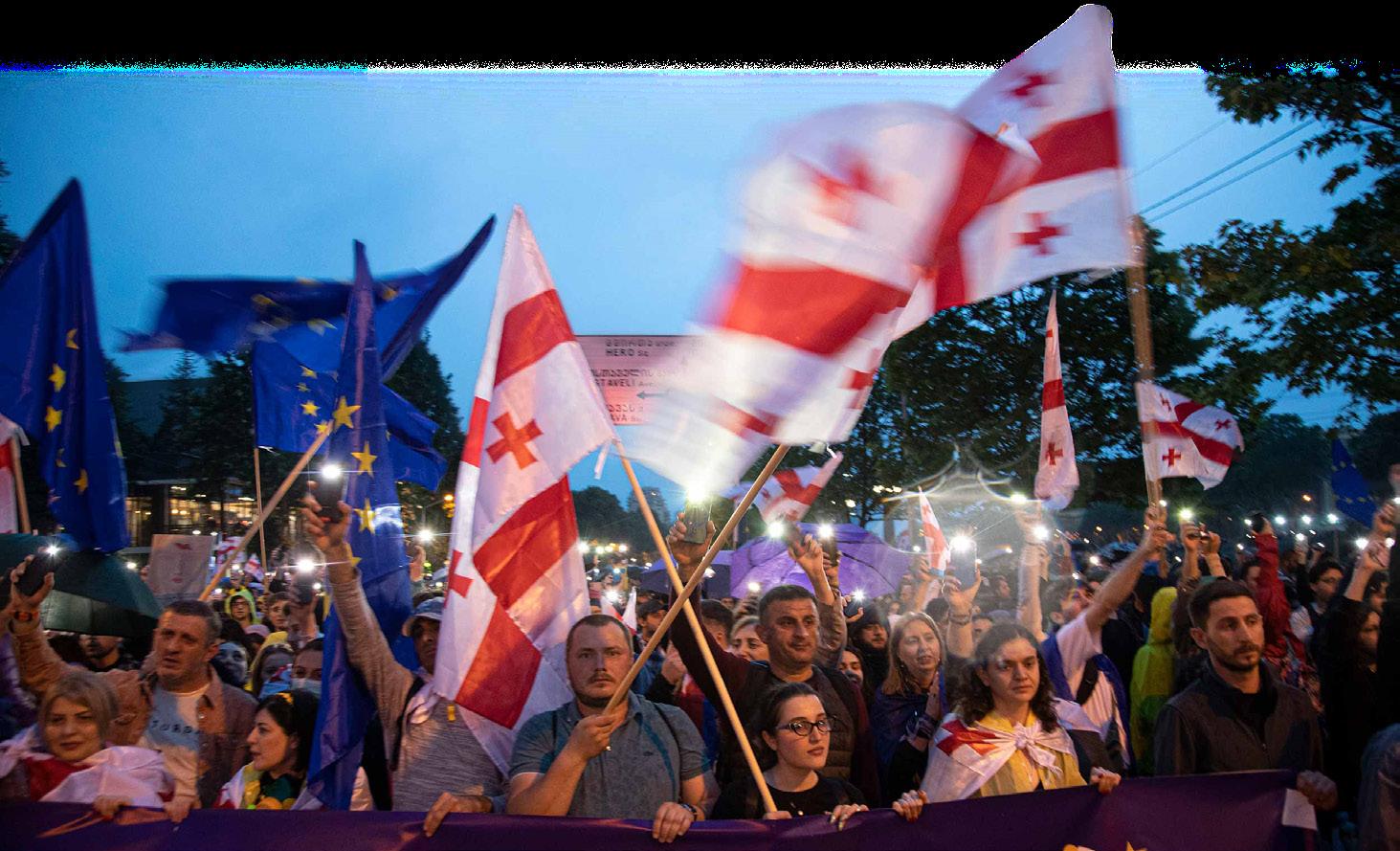
way.”
Gutbrod recalls a friend, shaking with anger, saying, “They’re trying to turn us gay.” While easy to ridicule this or dismiss as extreme, he warns that relentless propaganda breeds fear: “There’s this idea that protestors are Satanists. A constant drip of that will have an impact.”
The second group fears change and sees government as stability. Gutbrod highlights the irony: “They want continuity, yet the Georgian Dream are the brazen ones pushing a radical agenda. The government, not the people, is breaking from the Constitution and venturing into bizarre, uncharted territory.”
The third group are the regime profiteers. Georgia has been a model of anti-corruption reform, but Gutbrod says it’s now in “full-on reversal.” People in real estate or with close ties to the government have gotten “very, very rich in a short amount of time. It is ostentatious wealth. The kinds of cars you now see parked at luxury hotels are cars I haven’t seen in such concentration in major German cities.”
Geopolitical importance
Georgia’s importance extends far beyond its borders. The West’s intention for the region is to keep Georgia aligned with Europe and as a bulwark against the Kremlin’s growing influence in the Black Sea Region. As such, since 1991, Western countries have provided over $10 billion in aid to strengthen the country’s democratic institutions.
The region is also of strategic value to Russia, whose historical imperial slogan, “Who owns Tbilisi, owns the Caucasus,” underscores this point of contention. In 2008 and 2009, Russian troops poured into Abkhazia and South Ossetia, annexing 20% of Georgian’s territory. Framed as a defense of Russian-speaking populations, the invasion sparked violence, ethnic cleansing, and mass displacement, with the International Criminal Court confirming crimes against humanity. Despite these atrocities, Russia invested heavily– $800 million in Southern Ossetia–in the occupied areas, cultivating a sense of gratitude among local populations who view Russia as their “liberator”. This East-West struggle is nothing new, but under Ivanishvili, Georgia has veered dangerously toward Russia, risking deeper isolation from its democratic allies. As Shamugia warns, “Ivanishvili’s propaganda frequently emphasizes ‘sovereignty’ or ‘neutrality,’ which, in his case, implies isolationism—or more accurately,

With European leaders holding limited influence and Trump’s increasingly isolationist stance reshaping global dynamics, there is growing division over Western involvement. Right-wing groups argue that it’s not their concern, while left-wing voices suggest that Western interventions do more harm than good.
Meanwhile, Georgians fear a Russian future. Shamugia notes that “If the oligarchic system withstands the pressure, Georgia will become politically dependent on Russia and economically dependent on China, which will ultimately distance us from the West.”
These shifts will primarily impact people’s rights. “Georgians just want a normal life–human rights, good healthcare, education. When we’re dangerously close to Russia, we lose our chance to develop, to improve, to become more democratic. We are desperate, but we fight because, to be honest, there is no other option.”
This is not the end–Russia, already entrenched in Georgia, may tighten its grip on the Caucasus and expand further, with Moldova seen as a likely next target. Burduli notes, “Russia will not stop with Ukraine and Georgia. It will extend its authoritarianism further. There simply isn’t enough Western sanctions and enforcement against our government.” Gvarishvili concurs, “We are the bridge. If Georgia is lost to Russian influence, the West loses the whole Black Sea region and South Caucasus. I don’t think they want to risk that.”
Gutbrod concludes, “What happened in Georgia is something that happened in the slipstream of Ukraine. In the end, it’s an assault on people who want a different future for themselves. Georgia matters, and not just for itself. It is symptomatic
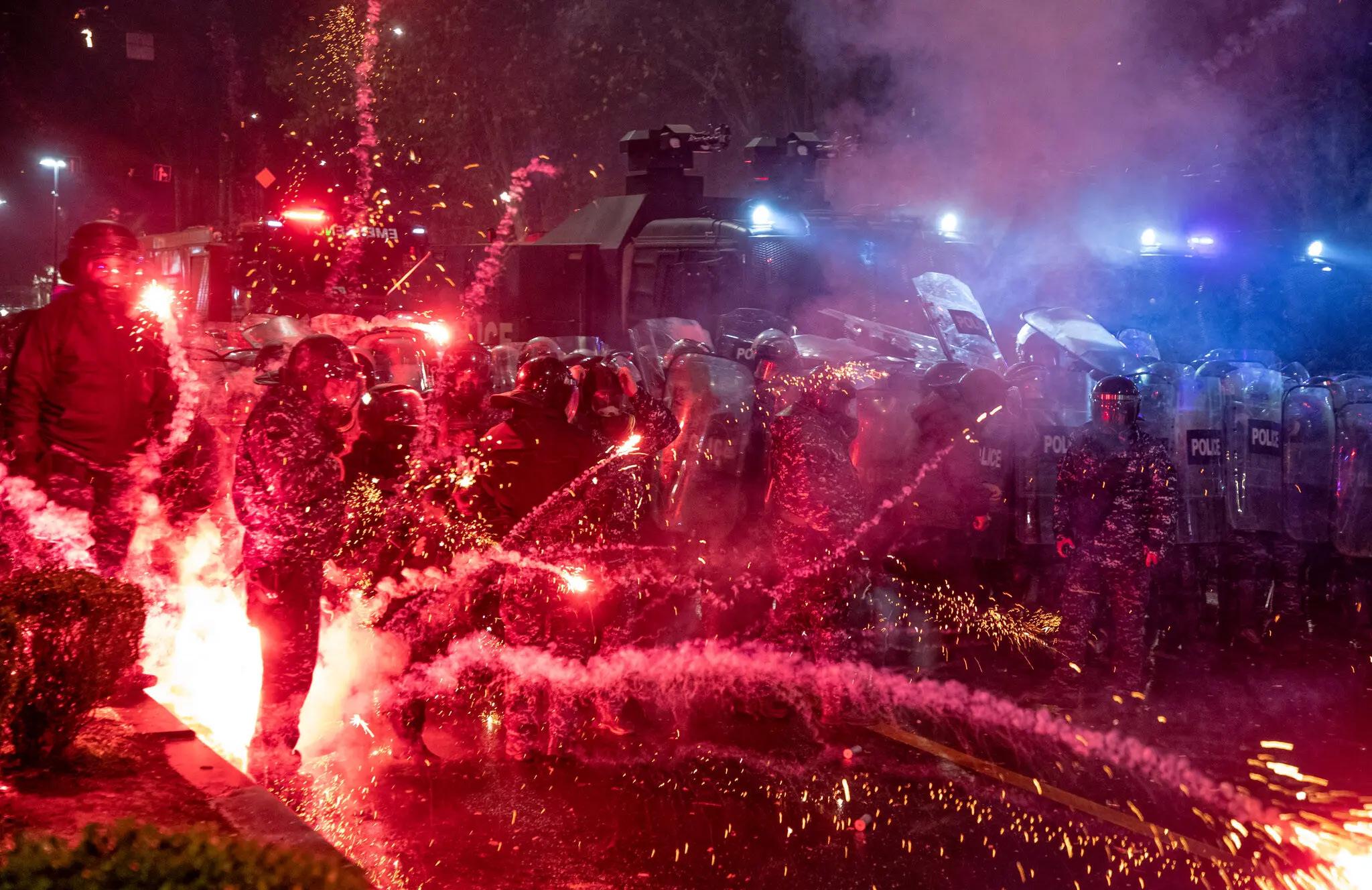
of a broader problem, and in some ways, could risk being a blueprint for an assault that may come much closer to Europe very, very soon.”
To restore the constitutional process, Gutbrod urges Georgians to “politicize their realities” and form a unified opposition party. Shamugia describes how detainees, whose hands and legs were broken during torture, were repeatedly asked, “Who is leading these demonstrations?” The lack of clear leadership has pros–preventing the movement from collapsing with the imprisonment of one leader–but also cons, as political capital is harder to build without defined leaders.
As Gvarishvili points out, after the Georgian Dream is out of power, the country must rebuild its institutions from scratch. “There is not a single democratic institution left to save,” she says, “we need to build this country from the ground up. To do that, we need principled leaders with liberal democratic values–unfortunately, they are in short supply.”
The future of Georgia, situated between powerful neighbours, remains in flux. Gutbrod outlines several potential outcomes, “It can be useful to look at concrete historical examples.” He begins with Azerbaijan, where “civil society has been extinguished and good people have to leave.” Iran’s modern history, too, is a warning. “In the 1970s, it had space for a range of lifestyles–typically, for a very small sliver. And then? Decades of darkness. Executions. So on and so forth.” The implication is clear: Georgia, too, stands at a precipice.
Poet Shamugia adds, “Success depends on three forces–the angry public, local
politicians, and democratic countries working in sync. If one fails, we risk losing this fight and facing authoritarian rule for years to come. That’s why we need to be cautious–and we are, all of us.”
Russia looms in the background. “No sensible person wants that,” Gutbrod says flatly. “But history doesn’t always turn out the way you want, and Georgians understand that deeply.” While the West often believes in the steady march of progress, Georgia’s history tells a different story. “You don’t have to go far to find people who know otherwise–that Georgia has been ‘cut off’ more than once in history.”
Georgia has always existed at a crossroads, drawing from both Europe and Asia. This fusion shapes its culture, where protest stands alongside poetry. Shamugia concludes, “Some say, ‘Now is not the time for romance,’ but what could be more romantic than protest?”
“Some say, ‘Now is not the time for romance,’ but what could be more romantic than protest?”
BY RORY SCHOENBERGER
Mark Foster Gage is the founder of Mark Foster Gage Architects, a professor at the Yale School of Architecture, and has published several books including Designing Social Equality: Architecture Aesthetics and the Perception of Democracy and Aesthetics Equals Politics: New Discourses Across Art, Architecture and Philosophy. His academic interests are focused upon the relationship between aesthetics, politics, and design. His designs have been exhibited in the Museum of Modern Art in New York City (MoMA), the Royal Gallery of Art in London, and the Museum of the Art Institute of Chicago, as well as in publications including The New York Times, Harper’s Bazaar, and New York Magazine.

What drew you to architecture, and how did you enter the field?
I went to high school in Omaha, Nebraska. I played football, and I had a coach named Mr. Hall who also taught a class called “The Humanities.” I took his class because I wanted to gain favor with him so that I could get the starting quarterback position—the worst of all possible reasons—but the class ended up changing my life. It’s pretty unusual in the Midwest to have a class about the arts, especially if it’s taught by a football coach who knows nothing about the arts. He played us music and showed us art and some slides of architecture.
He showed the class a picture of an Art Deco building in Omaha, which I had never seen. It was later made into the Museum of Western Heritage, and it was
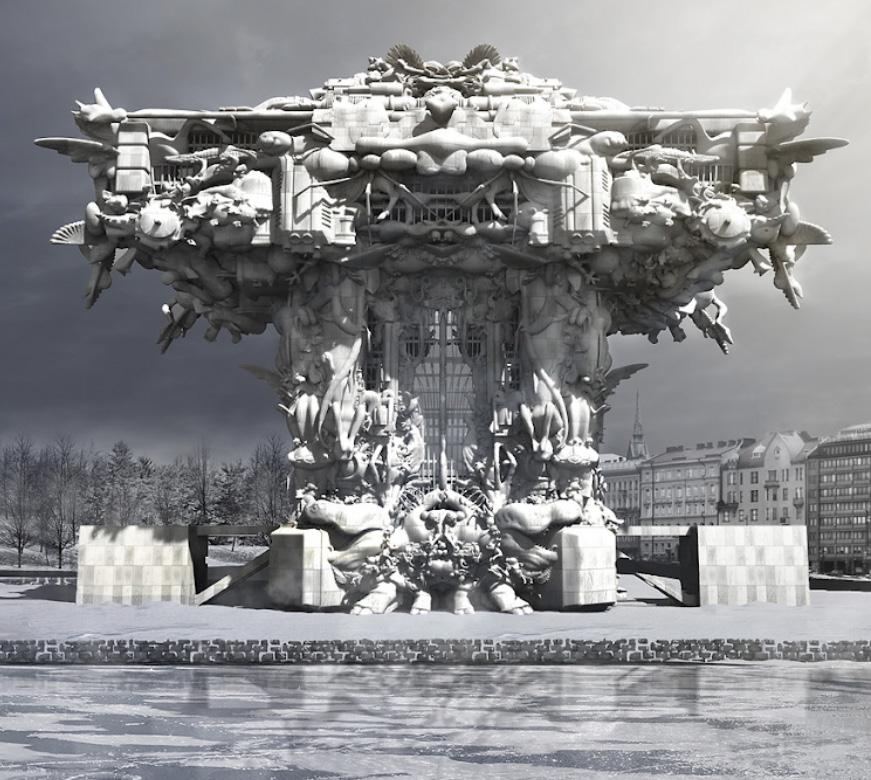
Helsinki Guggenheim Museum proposal
this gorgeous white marble building. I was like: “Wait a minute, people can do that kind of thing?” It never connected that someone could spend their life doing something that looked that cool. So, I eventually attended the University of Notre Dame and declared my major as architecture. It just clicked. I took enough classes in the arts, which I was also interested in, so I got a double major in art history and the rest was history. It was very weird. I never felt like I had to make a decision. It just happened super organically from when I was 17.
Could you please describe your work with the Biden/Harris Presidential Campaign—what did you create, and what was the process behind it? In “Creativity, Innovation, and
Aesthetics are about sight and sound and touch and smell, and because it’s the philosophy of that interaction between humans and the world, it governs how we understand reality. If you can influence how someone understands reality or actually builds their reality, which is what architects do, those are inherently political acts.

‘The New,” the class I teach at Yale, we’re talking about the dial between what’s familiar and what’s new. Campaign logo signs are turned all the way to familiar because they have to appeal to the most number of people––300+ million Americans, from New Yorkers to farmers in Oklahoma to surfers in Hawaii.
So, campaigns are not a place where you see a lot of innovation. They go through lots of iterations and colors and land on something that is almost always boring, but campaigns spend a ton of money on them, and they are highly developed.
I got put in touch with the head of Public Relations for the Biden-Harris presidential campaign about designing for the campaign. I made a couple of sketches, they loved them, and we developed them further. Because it was all during Zoom, no one needed yard signs because no one was going outside, so they mostly served as Zoom backdrops for fancy fundraisers. I think they put it on some swag, t-shirts, and donor gifts. The logo we designed in our offices, let’s say, “signature style,” has a lot of detail, numerous different figures and forms, and even when you’re in a virtual world, it was intended to produce a feeling like: “Oh, I feel like I’m seeing something special—above and beyond the official campaign logo.”
Why do you consider aesthetics as equivalent to politics?
You’re referring to my book Aesthetics Equals Politics: New Discourses Across Art, Architecture and Philosophy. Aesthetics isn’t just a judgment of whether we think something is beautiful or not; it’s a philosophical discipline that helps us understand how we interface with the world as humans.
Aesthetics are about sight and sound and touch and smell, and because it’s the philosophy of that interaction between humans and the world, it governs
how we understand reality. If you can influence how someone understands reality or actually builds their reality, which is what architects do, those are inherently political acts.
Aesthetics was not a topic you could discuss in architecture schools for about a century because Architectural Modernism cast aesthetics as a very elite thing. It was seen to be only about beauty. But philosophy kept moving with it, and it has developed today into a field that is much larger than only art or beauty. It’s how we relate to the world.
My goal in the book Aesthetics Equals Politics, which was also a symposium at Yale called “Aesthetic Activism” in 2016, was to invite people from philosophy, arts, curation, architecture––all sorts of disciplines to talk about how this renewed idea about aesthetics could influence all of our fields. The book is meant to be interdisciplinary—we’re all thinking about aesthetics in a different way in our fields, but we never talk about it across disciplines. Let’s come to Yale and talk about it. That was the idea that became the symposium, which then became a book.
How can architecture promote democracy? How can it harm it?
Question of the year—everyone in architecture is thinking about this. Donald Trump wants to make all new courthouse buildings be built in the classical style because he believes that democracy equals classical architecture. He’s not entirely wrong—the founders of the United States, in particular in Philadelphia and later in Washington DC, adopted the classical language in architecture because democracy originated in Ancient Greece, and they wanted to make allusions to this first democracy. And so, the architecture of antiquity became the reference for the architecture of the U.S. Government for a century. They wanted to skip all references to more northern European architecture, especially the
Gothic, because Europe was the oppressor, with all of their kings and queens. In Greece, they didn’t have any wood because it’s in a climate that doesn’t have a lot of big trees, so it was all stone. When it came to America, it became mostly wood and so things became thinner and lighter. It was a distinctly American architectural style that developed, loosely called Federalism, and it produced centuries of beautiful buildings. Harvard is entirely built in a kind of Americana style, which is why Yale went Gothic in style, because they wanted to differentiate themselves architecturally.
When I go and do jury duty near Wall Street, I’m entering this temple of democracy and go up these giant stairs.
There’s no real atteNtion paid to the type of community it produces, the identity it produces, who has access to it physically, and what it does visually and culturally in a neighborhood.
There’s these beautiful columns, and it just feels important, in the same way, that when you walk through the main door of Sterling Library—you feel like, “Wow, I can tell this is important. It’s big and formal and has a lot of detail. It’s special and houses special things.” You can tell just by looking at it that it’s special—which is something that architecture has lost the ability to do well today in my opinion. Now, there’s a general consensus that most of the buildings that are built these days, certainly government buildings, tend to be pretty ugly. They don’t really imbue you with a sense of civic pride or provide a sense of civic engagement. I think that impacts how people feel about the government. We’re not spending enough money or time on our civic
buildings. However, I totally disagree with Trump that the answer is to officially legislate a style. Legislating an official national architecture that is also classical in nature is exactly what Hitler did in the Third Reich, which makes it extra sinister to me. Hitler was making reference to the longevity and power of the Roman Empire, rather than Greek democracy, which Trump is obviously trying to tap into. Either way, through ignorance or intention, it’s terrifying.
Everything architecture does is inherently political. If I’m doing a building in New York City and I put the front door on a particular street, it means that people who walk this street have access to the building. If I put the front door on another street, it means a total other constituency of people have direct access. The boundary of the doorway is the most political thing in the world. A doorway is intended to separate out the people who are allowed in and the people who are not. That’s Politics 101: who’s allowed to have a voice, who’s not allowed to have a voice; who’s allowed to make decisions, who’s not allowed to make decisions; who has access and who doesn’t have access.
Also, the way we organize our communities can be political—architects can put down a bunch of glass towers on a barren sidewalk, really only accessible by car, or we can build buildings around a common plaza with markets and restaurants and encourage social interaction through mixed-use. So, architects have a lot of power to influence these things, but they aren’t being considered enough now because architecture is thought of as disposable and not worth sinking more than the lowest amount of money into—at least in the majority of cases. Get it done as fast as you can. There’s no real attention paid to the type of community it produces, the identity it produces, who has access to it physically, and what it does visually and culturally in a neighborhood. My position
It feels good to pretend to solve them with architecture, but it’s probably not the right tool. I think we’re not teaching the cultural aspect of architecture enough, how it produces community and identity— even beauty—through a more aesthetically driven agenda.
on ‘aesthetics equals politics’ orbits these particular ideas.
What architectural project are you most proud of?
We did a project for the Helsinki Guggenheim, which is this wild collection of sculptures that makes this wacky building. It got so much attention and was a statement that we can think about architecture differently. It doesn’t all have to be modern, basic, and minimalist. I did it to do something completely maximal
and crazy. It was to remind people, “What else can we do other than glass boxes?” It resonated with a lot of people. Is political meaning in art always intentional?
That’s a debatable thing in art. I always say art and architecture don’t come with instruction manuals. Unless you’re overt with political meaning in art, I don’t think art is the right communication tool for political ideas.
Art was used as a political device, for example, by the Catholic Church when it was building cathedrals. They showed Jesus and the apostles at the top and then the common people down below. You could tell from the picture what the hierarchy was. Back then, they didn’t have phones, they couldn’t read, they couldn’t produce books. Architecture or art, therefore, used to be the best medium to convey political ideas.
Now, I think they’re among the worst. Everyone has a smartphone, which is a much better communication device than architecture or art. Having said that, there are ways to do art and architecture that are politically forceful. I’m just not sure that should be their main goal. Richard Serra, the famous sculptor who went
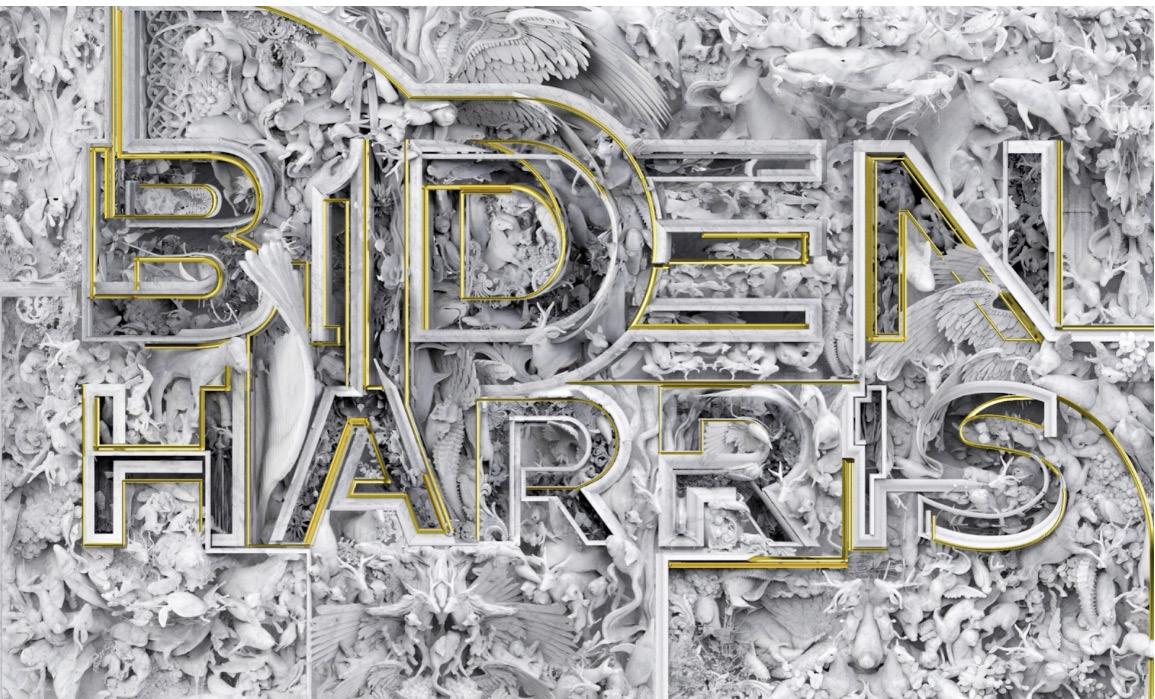
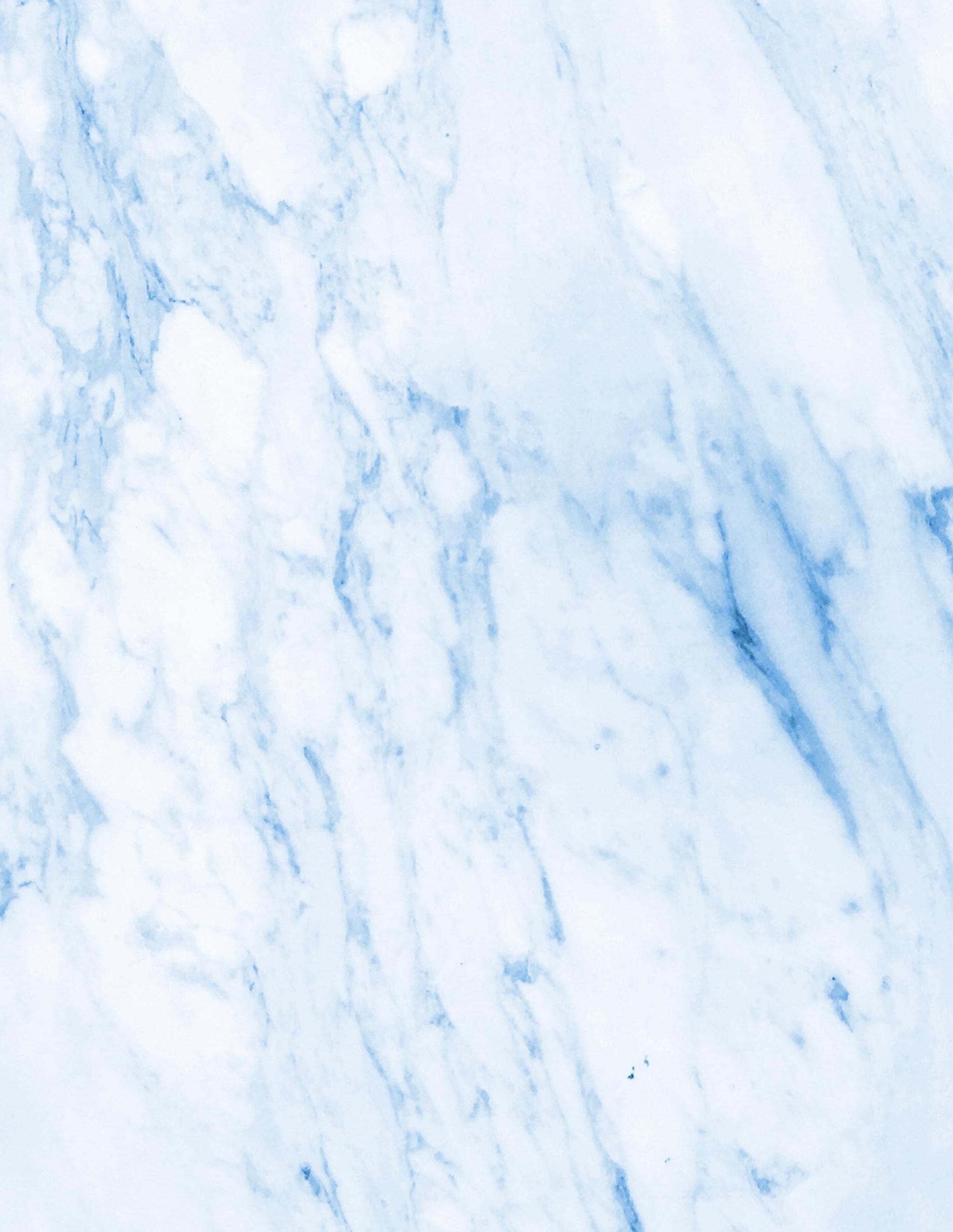
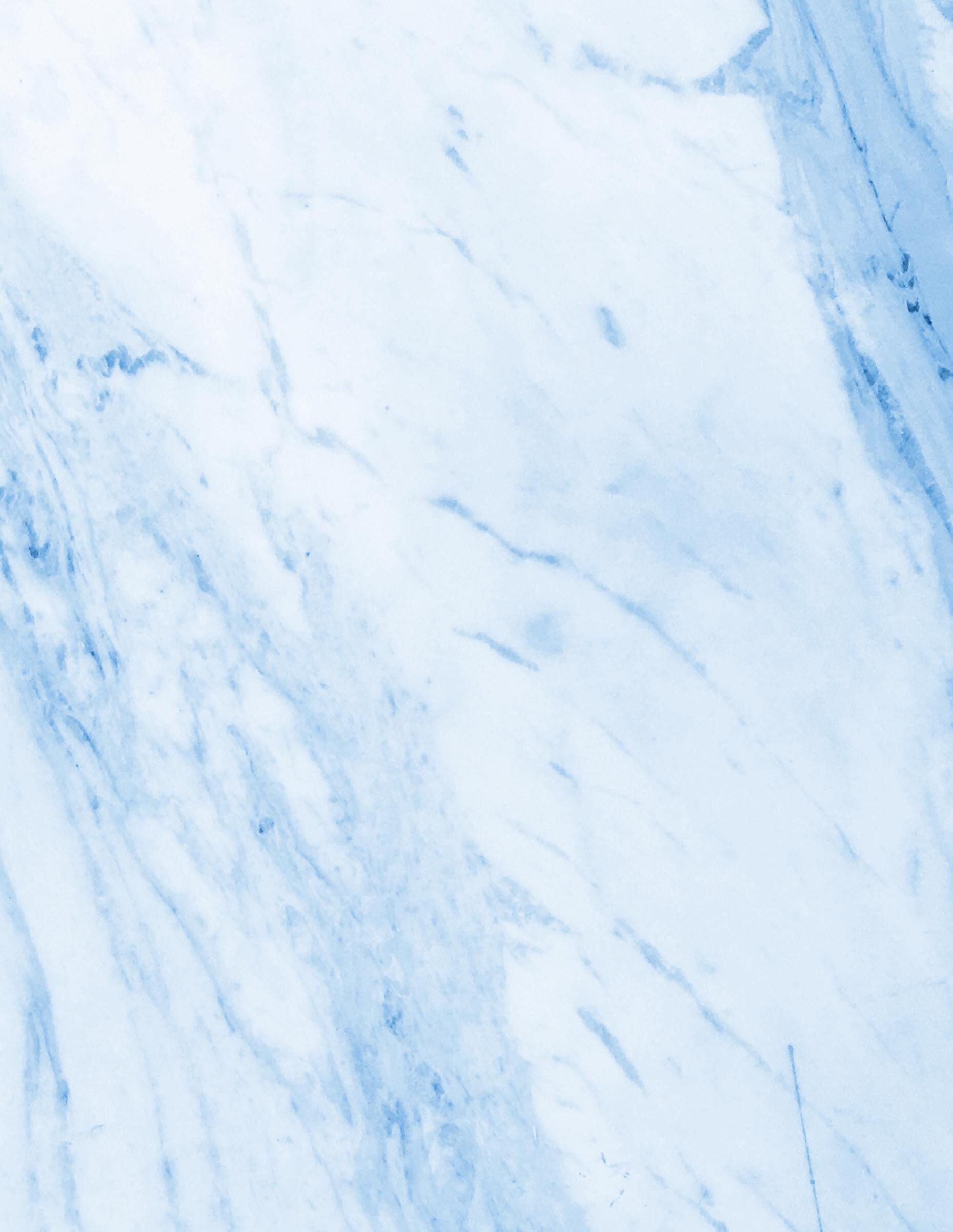

to Yale, is known for these giant torqued metal shapes that are sometimes tens or hundreds of feet long. One of the first ones he did was actually in front of a New York City courthouse.
In the early 1980s, he put this giant sculpture called “Tilted Arc” in the middle of Foley Federal Plaza so people couldn’t as easily walk between government buildings. To get to where you wanted to go you had to walk around this big art-obstacle. It made you think about your ability to access these civic buildings. It didn’t do it through a message; it did it through actually obstructing the way you move your body. But, I’m not sure we want all of our architecture and public art to be only about challenging us—we also need beautiful and humane places to live and work. Both can be political.
How have recent technological developments affected the field of architecture?
Very poorly. When the computer emerged in the 1990s as an architectural design tool, there was a lot of excitement because it could help us make forms that we had never been able to make before. Architecture prior to that was mostly lines and basic geometries that any kid could draw. With the computer, we could all of a sudden make these supple, com-
plexly curved blobs and vectors. There was probably the most excitement seen in architecture in centuries, maybe similar to when, in the early Renaissance, they discovered perspective, and it completely changed architecture’s nature.
What actually happened was that we spent a lot of time figuring out how to make these things robotically and really imagined a changed world enabled through computational design, but the technology that actually ended up influencing architecture the most was the spreadsheet. You could track the number of bricks, the number of pipes, and the number of linear feet of wood and how many window frames you need. It became easier to reduce the cost of buildings when you had the cost of every single item in front of you. So, I would say that the technological dreams of architecture that existed a few decades ago have been eclipsed by market efficiencies. As with so many things, profit wins. When you’re thinking about how to make buildings cost less money, you’re not thinking about the cultural impact of a building. The computer ended up being the enemy instead of the liberator. It has honestly been super painful for me to have to watch over the last few decades.
How do you think that Yale’s architecture represents and characterizes politics?
There are a couple of different answers to that. One is the student body. The architecture school has always been very politically engaged. All the way back in the late ‘60s there was speculation about whether students may or may not have burnt the architecture building to the ground during the racial and political tensions of 1968 and 1969.
Yale has different design studios where students sign up to learn with particular professors, and they can be very different. There’s a lot more studios today than there were 20 years ago centered around political topics.
However, I worry that there’s a little bit too much emphasis at Yale on solving the world’s problems through architecture when I think that a lot of them are not architectural problems. They’re political problems or economic problems primarily. It feels good to pretend to solve them with architecture, but it’s probably not the right tool. I think we’re not teaching the cultural aspect of architecture enough, how it produces community and identity—even beauty—through a more aesthetically driven agenda.
Architecture has a very bad habit of doing this kind of thing—if there’s a refugee crisis in Syria, all architects are going to design refugee housing for a year, and none of it will get built. None of it will be used by anyone, but it’ll make everyone feel like they’re engaged and doing virtuous work. It’s a good thing to do to think about the world in that way, but I also worry that it may be done at the expense of teaching what architecture has historically been. It’s a fine line. How do you be virtuous and also be realistic about what architecture is and what it can accomplish?
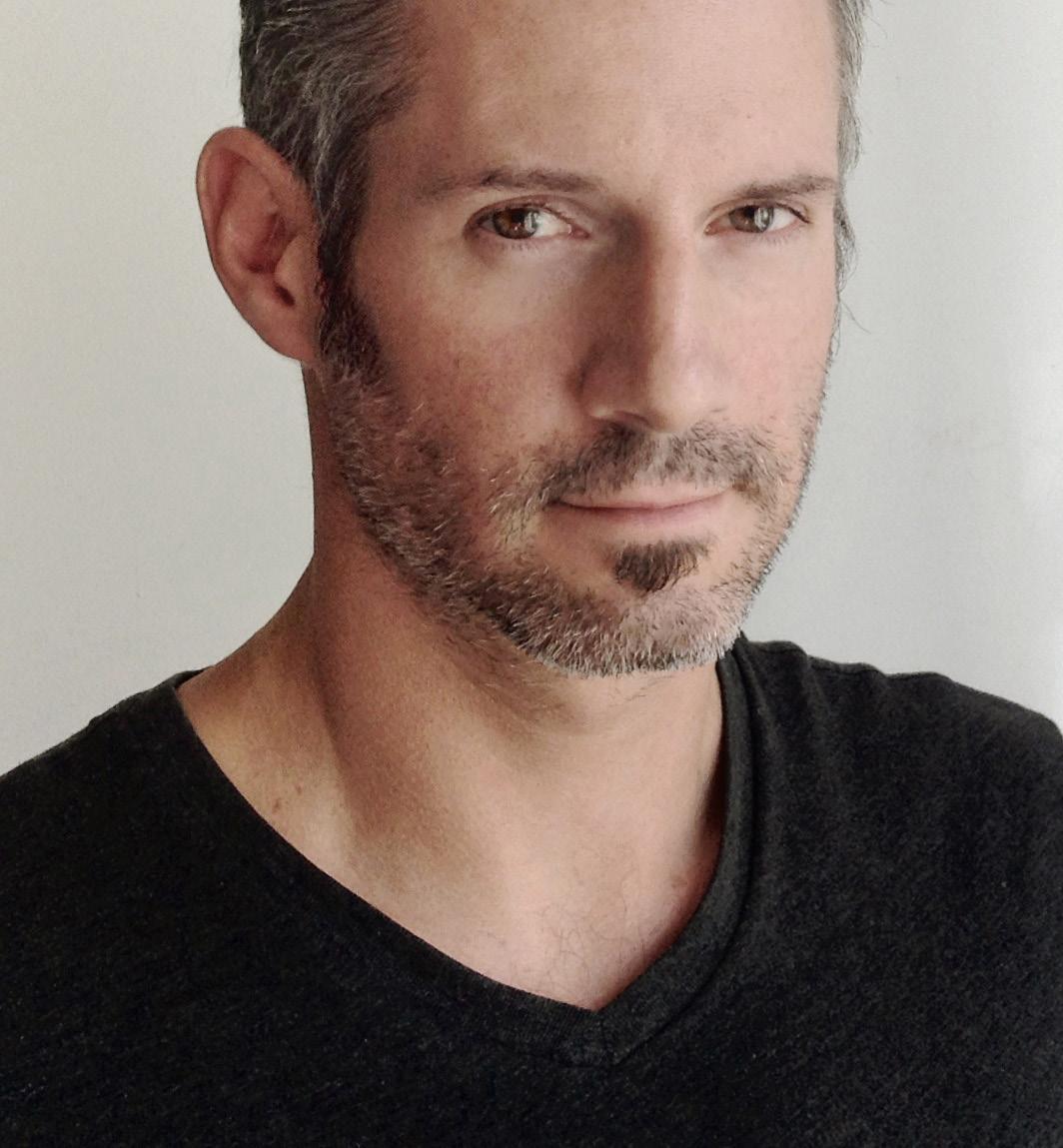
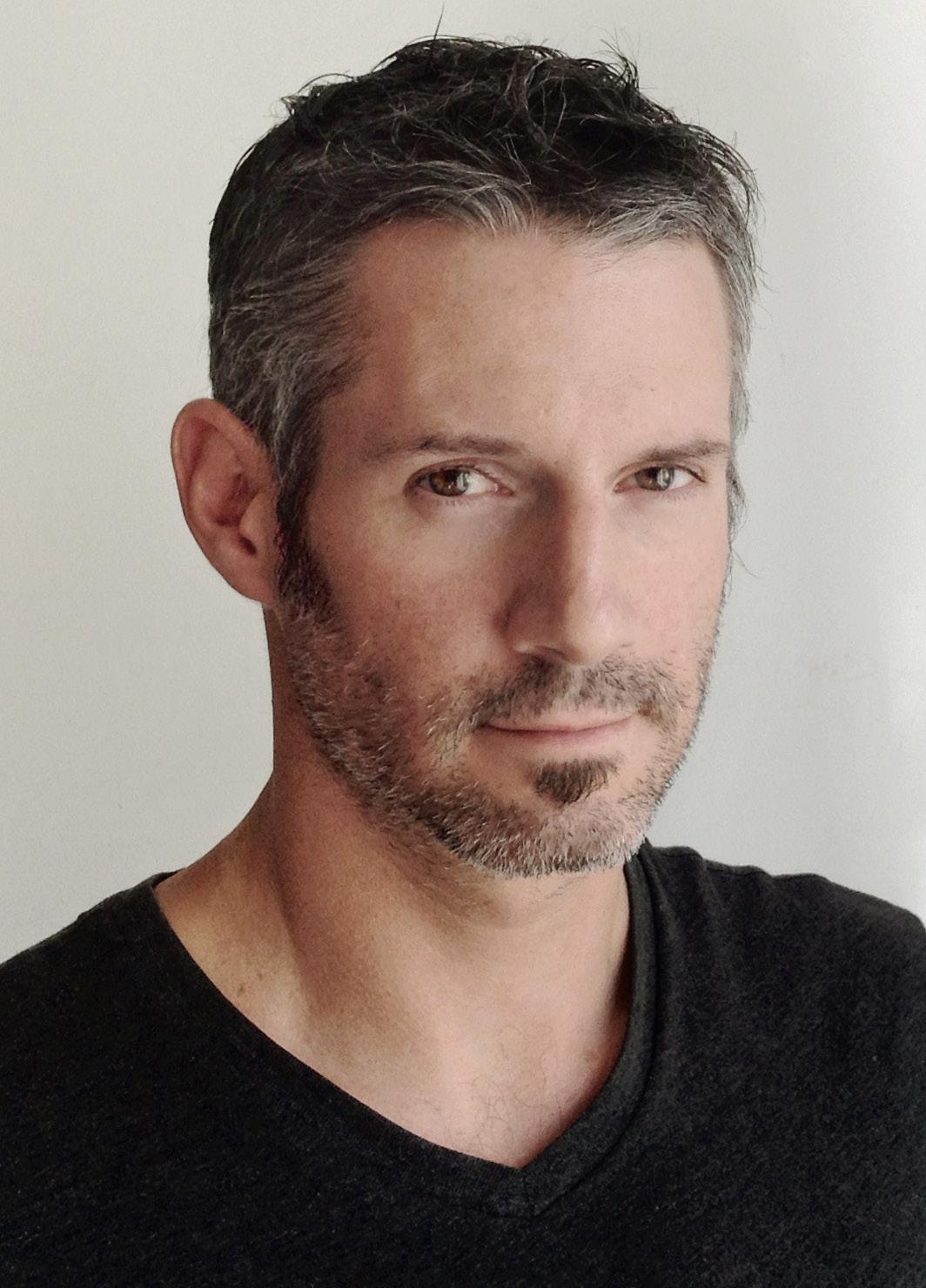


BY HANNA KLINGBEIL CANALE
Javier Manzano is a Mexican American cinematographer, producer, and photojournalist focusing on Latin America and the Middle East. An independent filmmaker in over 50 countries, he has earned eight Emmy Awards and two BAFTA nominations. His work has appeared on National Geographic, HBO, and the BBC. His raw and intimate photojournalism has won him a Pulitzer Prize, the Bayeux-Calvados Normandy Award, and two World Press Photo Awards. Most famously, Manzano’s Pulitzer Prize-winning photograph, taken in Aleppo, Syria (2012), captures two Free Syrian Army soldiers in a sniper’s nest as light filters through bullet holes behind them. He was the first freelance photographer to win the award in 17 years.
***
Can you tell me about your upbringing and what drew you to photojournalism?
I was born and raised in a middle-class family in Mexico City. Growing up in Mexico City, I didn’t know many photographers, and certainly not any photojournalists. Education here tends to follow a very linear path. If you can afford to become a doctor, you go into medicine. If you can af-
ford to study law, you become a lawyer. It’s a very traditional set of social expectations so I didn’t explore photojournalism until later in life.
My mother is American. When I was 18, I left for the US. I went to college in the U.S., where I studied economics and international business. After that, I worked for a bank, then returned to Mexico and started work at an ad agency. It was there that I first met other photographers. We were working on commercials, and one project took me to northern Mexico, to the Copper Canyon. It was a social program for building schools in rural areas. The photographer on that project was also a journalist and, after talking to him, I was inspired to take black-and-white photography courses. That’s when I started learning about the old masters—the classic photographers of the early 20th century. Many of them were Eastern European and French.
Robert Capa, of course, was a major influence, and that’s when I started getting into photography. There were also a few documentaries that stuck with me. One was about the ICC case against war criminals from the former Yugoslavia. A photographer from Khabib had taken an image that was used as evidence in the ICC trials. That
completely blew my mind—to see how photography could enact real change, could help put war criminals in prison. That’s what every photojournalist aspires to do: to seek justice through their work. Of course, that kind of impact is rare—one in a million—but that’s what everybody aspires to do.
How do you mentally and physically prepare for your work, both before, during, and after being in conflict zones?
In the beginning, it was difficult because I didn’t know what I was doing. I was freelancing on top of already having a full-time job at a few newspapers.
At the time, I was based in Denver and trying to decide whether to return to Mexico. I ended up taking a trip to Ciudad Juárez in mid-2010. Juárez, in the state of Chihuahua, is a border city directly across from El Paso, Texas. At that point, the city was at the peak of the drug war. The Juárez Cartel was being overtaken by the Sinaloa Cartel. It was a war zone.

I had been covering immigration for about four years by then, so I was familiar with the border. But things escalated after 2006 when President Calderón took office. Two years into his presidency, he launched a war on the cartels, and the result was a massive spike in violence, especially in key border crossings like Juárez. It was such a contentious spot. Everybody wants to control it in the illegal trade.
That’s where I was in 2010—covering the conflict for most of the year. And that’s when I saw real violence. I remember the first few times that I was exposed to that. I had trouble sleeping, and I couldn’t unsee some of the things that I saw. It takes

a while. You try to seek some of the counsel of the older journalists who have been doing it for longer than you have. They give you some advice, but at the end of the day, it’s just journalists taking care of journalists, and none of that involves professional psychologists or psychiatrists. Over time you do get desensitized to some of it, but hopefully not completely. The same thing goes for EMTs and ER doctors and surgeons, except they’re actually doing an amazing job with their hands and their knowledge, and we’re just taking pictures, or we’re taking video. The same goes for the activists and the homegrown social movements. That’s the difference. They’re saving lives. We’re just documenting. We just take images, we take video, and we just take from them, and we try to justify in our minds that our information is gonna enact some change. That’s something that has never really sat well with me, as long as I’ve been doing this. You always have all these ethical dilemmas. I don’t think they get any easier, to be honest. And so, of course, it’s hard to grapple with that. I don’t do news that much anymore, and I certainly don’t do photojournalism. I
stopped taking photos 10 years ago.
How do you see the role of Latin American journalists in global conflict reporting? Do you think they bring a different perspective compared to their American or European counterparts?
Where we are from, there’s very little to lose. We don’t have the opportunities that other, more developed regions of the world have. So it’s all or nothing. I really admire that from Latin American photojournalists.
There are a few photojournalists from Peru who are good because they go after it. There was one who was hanging out with the Taliban going to Kandahar before Kabul fell. Some of the work he did was phenomenal, and no one in their right mind would have done that except for him. The threshold for risk is probably bigger. I admire their work but unfortunately, I don’t see that many Latin American journalists out there. There are so many barriers to entering this industry because of the lack of opportunities in their home countries from local networks or media organizations; they don’t have the deep pockets that maybe American, British, or European networks have.
What was your experience like in the Middle East? What were some of the biggest challenges you faced?
The entire Middle East is a region where what happens on the ground is completely different from what was being reported. I covered Afghanistan. I lived there from the end of 2010 to 2012. And I always kept going back. At times, we’d get
into the country through the mountains, or, whenever some roads opened up. When ISIS took over, we would smuggle ourselves into some of these countries. Afghanistan has also always been really close to me. I was there when the Taliban came into Kabul.
We’ve all covered this. We’ve all written the words or made the documentaries that recount what’s happened. And you know, nothing really changes in U.S. foreign policy. Every four years, there’s a wild swing from one side to the other, leaving U.S. allies looking at themselves and asking ‘who do we trust now?’ I don’t know what good our work has done over the last 15 years covering the Middle East, if, at the end of the day, Americans only want to vote for less taxes and cheaper gas. American voters have an outsized representation in what happens across the planet because of their votes. That vote is going to affect someone in the West Bank. It’s going to affect someone in Bangladesh. It’s going to affect someone in Iran, Africa, Mexico. I wish that Americans exercised their vote with an equal amount of informed responsibility, which I don’t see, and that’s where we have failed as the media.
How do you think photojournalism shapes public perception and policy?
The real truth is that local journalism is what really enacts change. I remember the Children’s Hospital of Orange County in California got a $2 million donation because of some of the stories that we did.
When you’re doing international work, you are rubbing against other country’s interests. A lot of the networks are not going to give you the complete story. Take CNN. You have CNN Domestic, and you have CNN International. It’s as if we were living in completely different galaxies. What’s being offered to a national audience? It’s a very distilled, simplified, sanitized version of what really goes on out in the world. CNN International has reporters who are trying to get to the bottom of things, and the audience is completely different.
Change, positive change, is very hard unless you come across something massive.
What led you to transition from photography to documentary filmmaking?
When I won the Pulitzer, I had already decided to move on to video. I knew that photojournalism would face some real economic pressures in the industry. I didn’t think it was worth exposing myself for the prices that they paid, especially since I was working a lot for wire services, which is very badly paid work. Video was more involved. I’m not gonna say it is an art form because that’s giving it too much credit, but it’s more involved, and you have to crop the story in your mind, visually. So I thought, for me, it was more of a challenge than taking photographs.

Is photojournalism a dying field?
I don’t think it’s dying. There’s gonna be fewer people
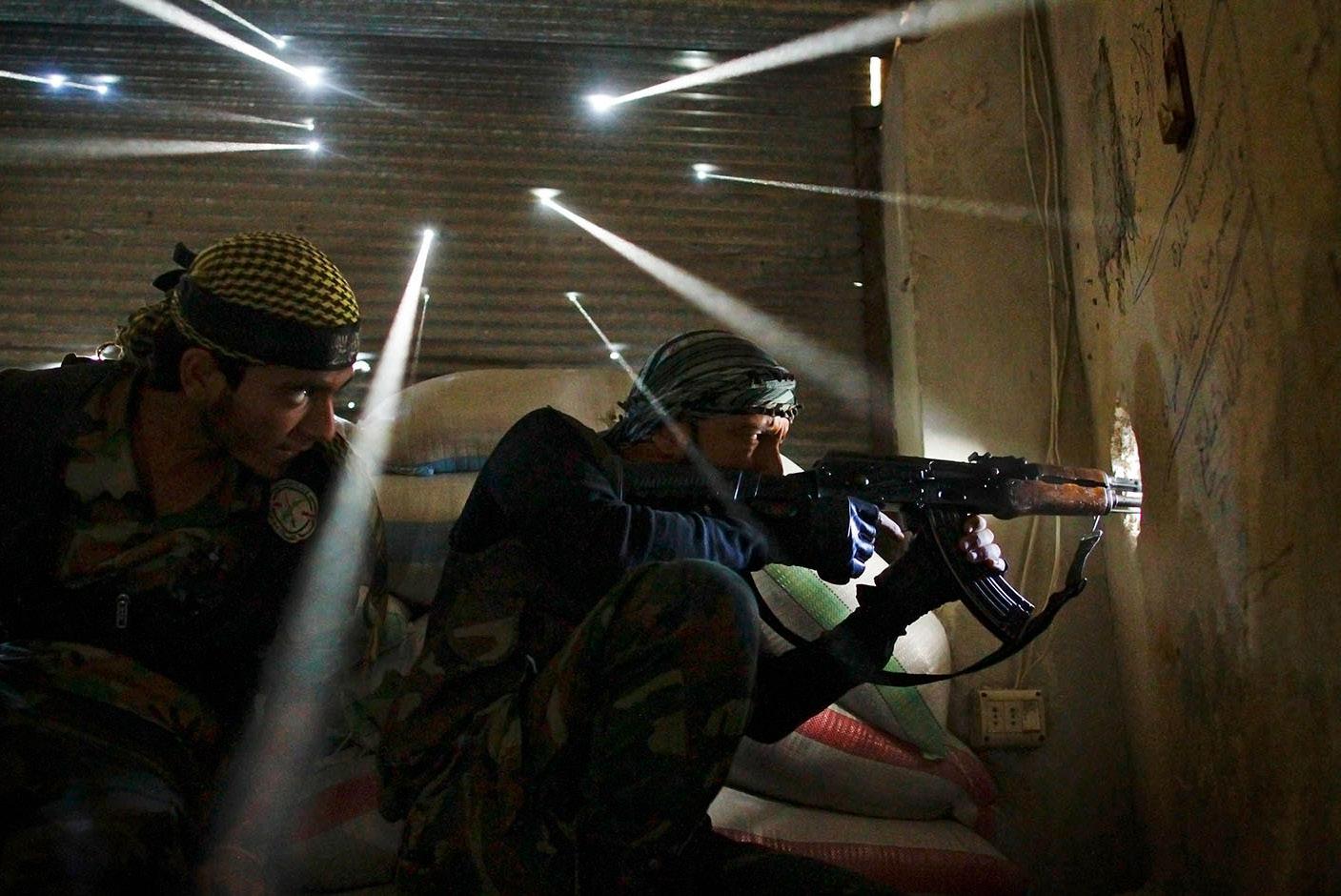
doing it and I think it’s gonna shift more into local journalists. It’s not necessarily a bad thing
In terms of the future of photojournalism, I worry that, with the pressures of AI, it’s going to suffer. AI recently made some photographs from D-Day, and they are amazing; the level of perfection that AI has achieved in mimicking a photojournalistic image is incredible. The 20th century was the golden age for photojournalism. The 80s, 60s, 70s; Vietnam, El Salvador, Nicaragua, and the Cold War. I just don’t see photojournalists being able to make a living the way they did in the past. I also don’t see ad revenue or the budgets for photojournalists to continue working. And so it’s going to become more of the responsibility of local photojournalists to tell their own stories, whether it’s with a camera or with an iPhone.
We have this arrogance that only Western journalists have the monopoly of truth, and they are the only ones who can look at a situation objectively. That’s really arrogant on our part, and we’ve been doing that for decades, descending on countries that don’t speak our language and believing that we’re better than local journalists. We’re obviously not.
I do see a resurgence in local photojournalists in the Middle East, Africa, and Latin America. They’re fantastic, and they have amazing eyes. I love to see their work, and I love to see them being recognized. No one can tell a story better than the people from the region. Nobody can talk about themselves better than they can.
No one can tell a story better than the people from the region. Nobody can talk about themselves better than they can.
